Blair Fjeseth President and CEO of Mountain Health CO-OP.
Sabine Wisnioski Global People Change Leader

Blair Fjeseth President and CEO of Mountain Health CO-OP.
Sabine Wisnioski Global People Change Leader
Vasa Krishnan Chief Technology Officer of FinResults, Inc.
Blake Morgan Customer Experience Futurist, Keynote Speaker, 3X Bestselling Author, & Consultant
Chantelle Znideric Personal Stylist, Personal Brand Expert
Claire Koryczan Founder & Director, Imagine Beyond
Dr. Jane Thomason, Investor in the Areas of Web3, Metaverse, HealthTech, and Tech
President and Chief Customer Officer, Employee Experience Division, HRIZONS, Author, Speaker, & Advisor



July 2024
Managing Editor
Consultant Editors
Sarath Shyam
Dr. John Andrews
Emma James
Sabrina Samson
Naomi Wilson
Andrew Scott
Kwith Alexander
Editorial Enquiry: admin@cxoomagazine.com
Art & Design
Branding & Marketing Partnership
Charlie Jameson
Louis Bernard
Shirley David
Jennifer Anderson
Monica Davis
Rachel Roy
Anna Elza
Sales Enquiry: admin@cxoomagazine.com
Free Subscription
www.cxomagazine.com
Vol - 02 Issue - 08
International Partnerships
admin@cxoomagazine.com
Americas 16192 Coastal Highway, Lewes, DE 19958, USA
Europe
27, Old Gloucester Street, London, WC1N 3AX, UK
Middle East & Africa P.O. Box 48299, Dubai Silicon Oasis, Dubai, UAE
Asia-Pacific
Ramanashree Arcade, 18 MG Road, Bangalore, India


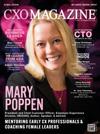
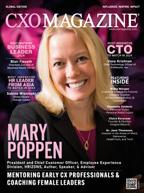

Have you ever had one of those "aha" moments where a conversation with a remarkable individual leaves you inspired and ready to take on the world? I had one recently while chatting with a friend about the incredible leaders we're featuring in this issue of CXO Magazine. It got me thinking about how leadership is evolving in ways we couldn't have imagined just a few years ago.
This edition is particularly close to my heart as we dive into the stories of extraordinary leaders who are not just surviving but thriving in today's fast-paced business landscape. We've crafted three segments for you: Most Innovative HR Leaders from Asia to Watch in 2024, Most Inspiring Business Leaders of 2024, and Most Innovative CTOs to Watch in 2024. These segments shine a spotlight on individuals who are setting new standards in their fields and making a difference in the world.
Let's talk about our cover star, Mary Poppen. Imagine a leader who not only revolutionizes customer experience strategies but also shapes future leaders through education. That's Mary for you. As the President and Chief Customer Officer of HRIZONS EX and a Professor of Practice at Michigan State University, she's a powerhouse of innovation and customer-centric thinking. Mary's journey is nothing short of inspiring. In our in-depth interview, Mary shares her professional trajectory, the major takeaways from her latest book, future plans, words of wisdom, and much more.
Leadership today is about more than just making decisions; it's about inspiring others, fostering innovation, and creating a positive impact. The leaders featured in this issue embody these principles and serve as beacons of hope and progress. Their stories remind us that with the right mindset and dedication, we can overcome any challenge and drive meaningful change. So, as you flip through the pages of this issue, I invite you to think about your own "aha" moments. What inspires you? How can you apply these lessons to your own journey? Let's celebrate these remarkable leaders and their contributions, and let's carry their lessons forward into our own lives.
Happy Reading.

Sarath Shyam
PRESIDENT
AND CHIEF CUSTOMER OFFICER, EMPLOYEE EXPERIENCE DIVISION, HRIZONS, AUTHOR, SPEAKER, & ADVISOR

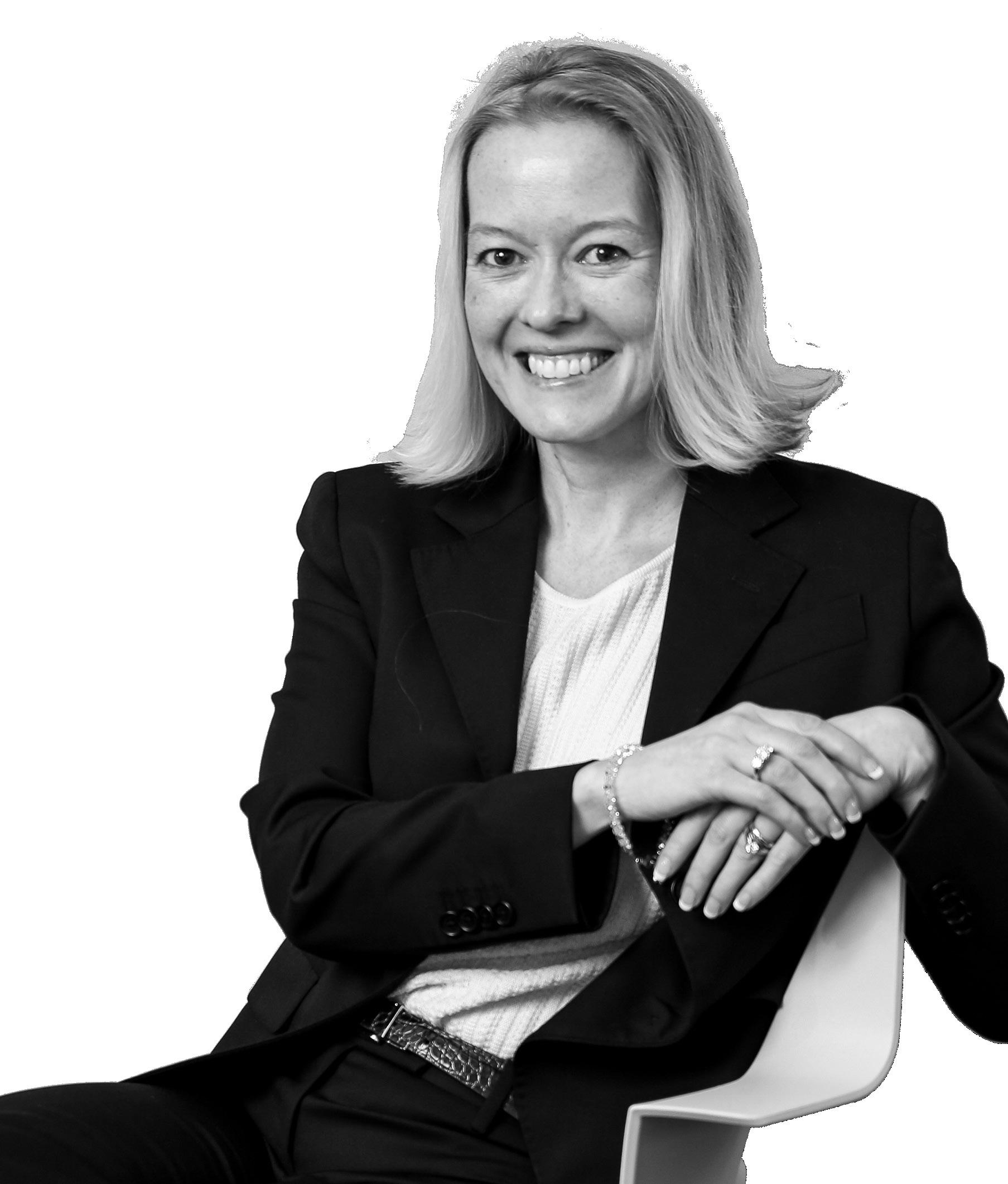
BUSINESS LEADER

24 Blair Fjeseth, President and CEO of Mountain Health CO-OP.
A Healthcare Visionary Prioritizing People over Profits

40
Sabine Wisnioski, Global People Change Leader Leading the Charge Through Innovative Collaboration
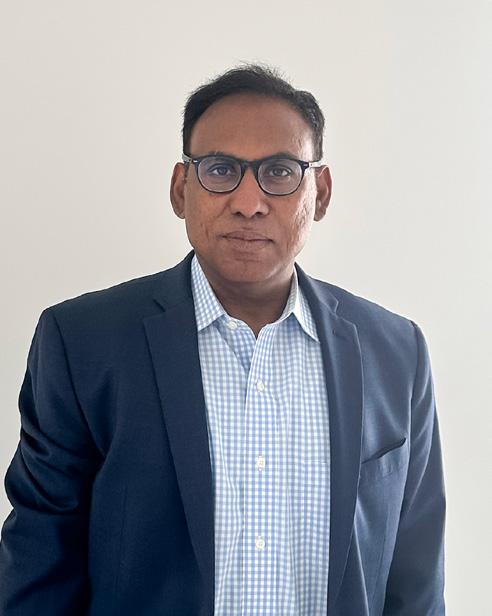
56
Vasa Krishnan, Chief Technology Officer of FinResults, Inc.
Shaping the Future of Fintech with a Blend of Strategic Foresight and Technical Expertise
16 Blake Morgan, Customer Experience Futurist, Keynote Speaker, 3X Bestselling Author, & Consultant
Helping Leaders Build a Strong Customer-Centric Culture



50 Claire Koryczan, Founder & Director of Imagine Beyond Entrepreneurial Leadership: Harnessing the Power of a Creative and Innovative Mindset in the Age of AI
32
Chantelle Znideric, Personal Stylist and Personal Brand Expert
Elevate Your Success: The Untold Secrets and Insights of Personal Branding Unveiled!
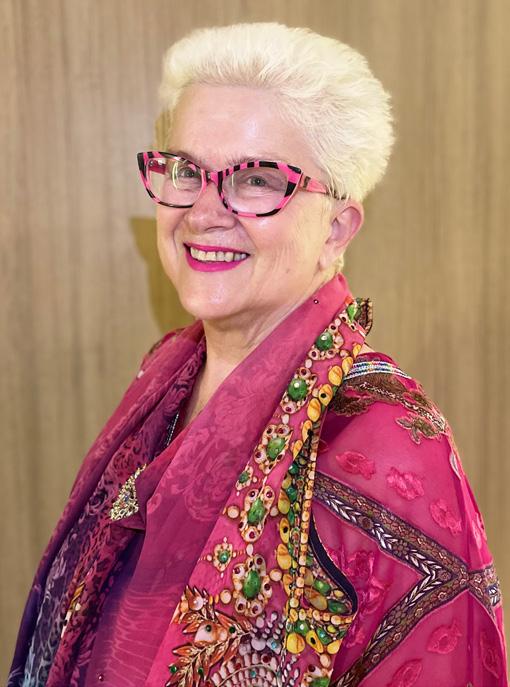
64
Dr. Jane Thomason, Investor in the areas of Web3, Metaverse, HealthTech, and Tech AI and ESG Powering Sustainable Investing

PRESIDENT AND CHIEF CUSTOMER OFFICER, EMPLOYEE EXPERIENCE DIVISION, HRIZONS, AUTHOR, SPEAKER, & ADVISOR
Mary Poppen is President and Chief Customer Officer of HRIZONS EX and Professor of Practice at Michigan State University teaching in the Customer Experience Management Master’s Degree program (MS-CXM). She is also a CS Angel investor. Prior to her current focus, Mary was Glint’s Chief Customer Officer at LinkedIn and Chief Customer Officer for SAP’s Global Cloud business before that. Mary holds a Master’s Degree in Industrial/ Organizational Psychology and has over 20 years of customer delivery, business consulting and executive leadership experience. She is a well-recognized customer and employee experience thought leader, speaking at global events and authoring several publications in this space. She recently published a book entitled “Goodbye, Churn. Hello, Growth!”
Recently, in an exclusive interview with CXO Magazine, Mary shared her professional trajectory, the major takeaways from her latest book, future plans, words of wisdom, and much more. The following excerpts are taken from the interview.


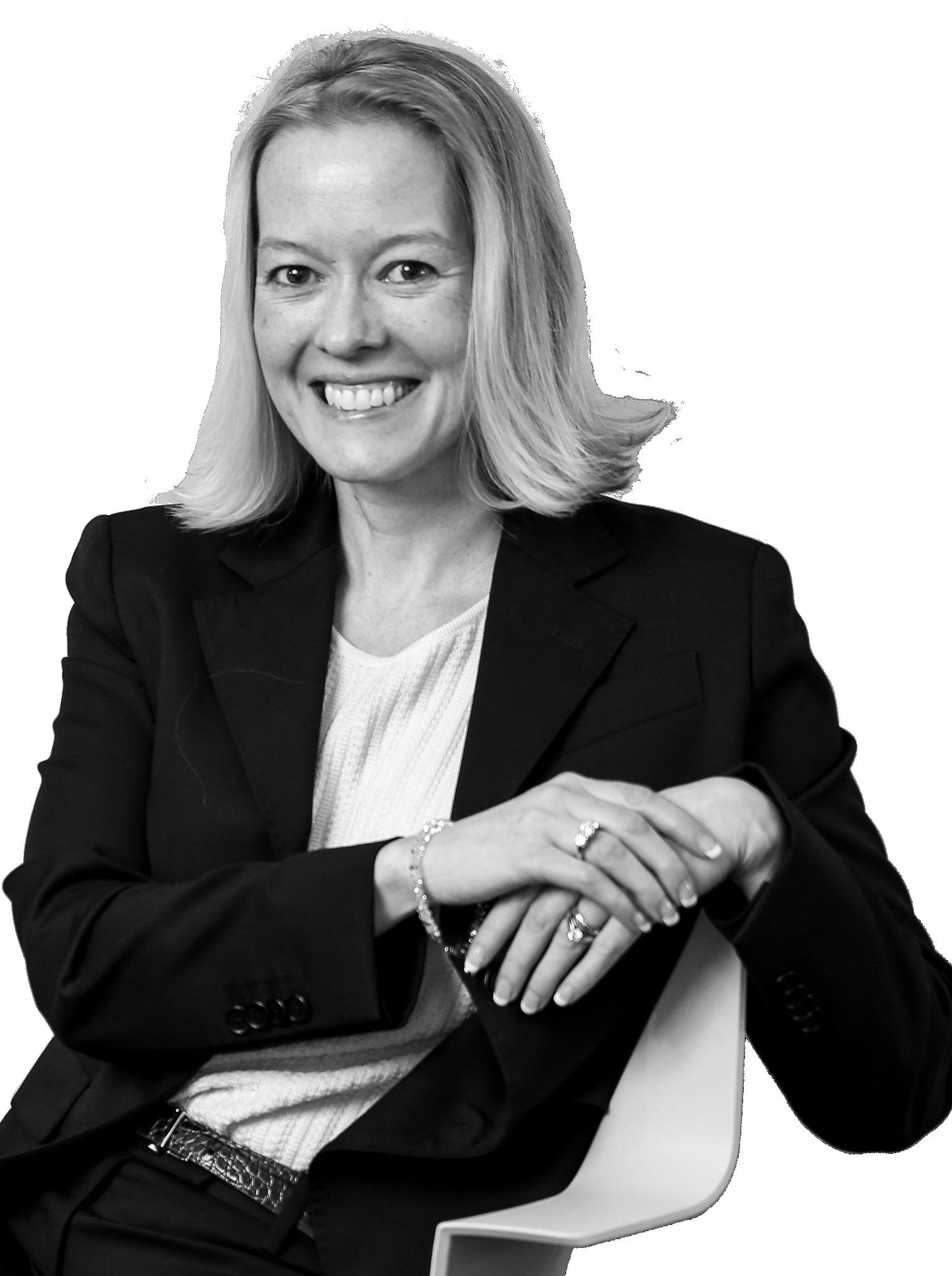
Hi Mary. How did you first get into customer experience, and what inspires you to stay?
I started in “Customer Experience” long before today’s understanding. I began working for SuccessFactors, the first HCM SaaS solution, in the early days, before Software as a Service was understood. As expected, the traditional
software delivery of the on-premise days was applied to SaaS and sure enough the customer received implementation services and technical support, but the actual adoption of the software was highly unmonitored. I like to say it was moving from “Building Houses” (on-premise) to “Renting Apartments” (SaaS). With SaaS, if you didn’t like your landlord

or the apartment building, you could up and leave quite easily, unlike the traditional onpremise software deployments. SaaS changed the focus of software from product-centric to customer-centric. It was an opportunity to put the customer at the center of the value proposition. This was the era of refining what customer success and value meant and

When customers are at the center of your business, great things happen for the customers, the employees and the company results!
put Customer Experience in the forefront of delivering on it. I was fortunate to have had the opportunity to be involved in shaping customer-centric software and delivery from the beginning, and I’ve remained in CX because there is still so much innovation and evolution to be a part of.
What do you love the most about your current role as President and Chief Customer Officer, Employee Experience Division at HRIZONS?
As a customer-focused service provider of HR technology, there is an opportunity to innovate and personalize around the customer’s specific unique business requirements and outcomes. I get inspired by the opportunity to do things differently to drive value for customers, employees and for the company. There is a significant linkage between employee and customer experience. This is something I’m very passionate about and continue to have an opportunity to impact in my current role.
Can you please share the major takeaways from your book, "Goodbye, Churn. Hello, Growth!"?
I wrote the book to focus on the evolution of how far we have come with putting customers at the center of our businesses and what that means to revenue. Companies that still focus solely on revenue growth and product innovation are missing the boat on the true impact of customer success. When customers are at the center of your business, great things happen for the customers, the employees and the company results! The book is a guide for deploying a more customer-centric focus in order to create “WOW” outcomes for your company, your employees and your customers!
CX technology needs to ingest data from multiple sources, analyze it holistically, and create insights so that teams can be proactive and personalized in their delivery
You are also a Professor at Michigan State University. Can you please tell us about the courses/programs taught by you and its relevance in today’s business landscape?
The first Master’s Degree in Customer Experience Management (MS-CXM) was rolled out by MSU just a couple of years ago. While there are certificate programs in CX offered by other organizations and universities, this is the first true Master’s of Science degree in the field. The degree program covers the full gamet of customer experience topics including journey mapping, design thinking, customer relationship management, measurement strategies, building a customer-centric culture, and one of the key tracks is around employee experience and engagement. As there is considerable synergy between EX and CX, the program ensures a focus on how to foster, build and sustain robust employee experiences and engagement programs. I teach the Employee Engagement course and designed it to cover how employee programs relate to customer programs and how both impact one another as well as organizational results. If anyone reading would like to explore earning an innovative advanced degree in CXM, please reach out to me on LinkedIn and/or go to this link for more information: https://broad.msu. edu/masters/customer-experience-management/
In your experience, how can organizations effectively bridge the gap between customer experience (CX), employee experience (EX), and user experience (UX) to create a holistic approach that benefits all stakeholders? Throughout my career, one thing has remained consistent: companies operate in silos. After years
of working to break down silos to deliver better customer experiences, I have seen something interesting happen when teams in different departments collaborate. They realize better outcomes not just for customers, but for all key stakeholders. To achieve this, I envision a single business function that unites the work of all organizational departments in order to align and integrate the experiences of all business stakeholders. And while it may seem idealistic, it can become a reality if organizations centralize the design, delivery, measurement and cross-functional collaboration needed for all experience programs.
That’s my vision for Total Experience, or TX. My definition of Total Experience is simply “Alignment and integration of all stakeholder experiences.” This includes Customer Experience (CX), Employee Experience (EX), User Experience (UX) (including patient experience), and Partner Experience (PX). It goes beyond traditional business paradigms, recognizing the interconnectedness of organizational stakeholders. The outcome of successful TX is (drumroll)... increased revenue.
How do you see the role of technology, specifically data analytics and AI, in shaping the future of customer experience? Are there any specific tools or platforms that you believe are essential for organizations to adopt?
CX technology needs to ingest data from multiple sources, analyze it holistically, and create insights so that teams can be proactive and personalized in their delivery. AI is critical to scale this and Customer Intelligence is becoming extremely important as a focus for organizations. After decades of
collecting data on customers across functions, it’s time to bring the data together to tell a story on what drives customer success and double down on actions (across all functions in the organization) that will retain and grow customers. In addition, the tech stack needs to align to drive meaningful and value-add experiences and outcomes for customers. Siloed data and processes are no longer going to differentiate the customer experience and create value for customers. The entire customer journey (from prospect to renewal/expansion) must align and be cohesive. Data and AI will help achieve this outcome. Customer Intelligence, applying customer behavior and sentiment to priorities and resources, will become more and more critical for organizations to compete and succeed in the future. There is massive opportunity for innovation in this space to deliver on the above. I can’t wait to see what technology is released over the next few years to address this need!
Looking back now, what is one thing you wish you knew at the beginning of your career?
How to tell the story of my team’s impact to revenue growth! One of the biggest challenges for customer teams is to align to revenue growth. CS and CX teams don’t typically get investment and prioritization unless you can show revenue outcomes for the organization. Luckily, I had access to amazing Operations teams who helped me show the linkage of my customer teams to revenue. I wish I had started my career with the knowledge I have now about how best to link CX activities directly to business results. It would have saved me many nights of budget justification activity!
What are your passions outside of work?
I enjoy traveling with my husband and two sons, playing Pickleball, and wine-tasting with friends. I also enjoy mentoring early CX professionals and coaching female leaders.
Where do you see yourself in the next 5 years?
I can see myself semi-retired focused on traveling and exploring new destinations with my husband while also continuing to share the knowledge and experience I’ve gained through consulting, advising, and educator roles.
What are your tips for delivering great CX with a limited budget?
There are several low-cost opportunities to enhance your customers’ experiences. Consider using customer data to personalize interactions. Even small touches, like congratulating customers on their anniversary as a customer, can make a big difference. You can also use existing data to segment your customers based on their behavior and preferences to provide tailored experiences. Also, work to identify and eliminate inefficiencies in your processes; consider providing selfservice options such as FAQs, knowledge bases, and how-to videos to empower customers to find answers on their own. Conduct Quarterly Value Reviews to engage the customer and discuss the success of the partnership. Foster a sense of community among your customers through online forums, social media groups, or events. Partner with other businesses to offer complementary services or products that enhance your customer’s experience. Any of the above actions will have a positive impact for your customers while mitigating additional cost.
What is the one trend or approach in CX that every organization should be implementing?
Personalization at scale! My definition of personalization is being able to deliver the right information to the right person in the right way at the right time. This applies to individuals as well as organizations. I love to talk about “Customer Intimacy” and being able to personalize the experience for every customer is the pinnacle of reaching true customer intimacy. You’ve likely heard customers say “we’re different” or “our requirements are unique” to which you may snicker to yourself, but the reality is they are right. All customers are like snowflakes. No matter how similar in industry, size, complexity, there will always be uniqueness in culture, leadership, maturity, etc. Every customer should be considered in light of their own situation. However, delivering a customer experience that is unique to every customer is not easy.
Enter the linkage between technology innovations and data! Specifically, leveraging AI for personalization. It is now possible to leverage the data you’ve been collecting on your customers for years to understand how past behavior can translate into predicting future behavior. This in turn allows you to get ahead of the likely outcomes and take action to influence the direction. It involves leveraging data, technology, and insights to tailor experiences in a way that makes them more relevant, engaging, and valuable to the individual. If done well, personalization at scale helps foster stronger relationships, increases engagement and satisfaction, and ultimately drives loyalty, productivity and revenue growth.

Blake Morgan was called “The Queen of CX” by Meta. She is a customer experience futurist and author of three books on customer experience. Her new book is called The 8 Laws of Customer-Focused Leadership: The New Rules for Building A Business Around Today’s Customer. Blake has taught courses at Columbia University, Rutgers Executive MBA program and UC San Diego. She is an instructor for LinkedIn Learning. Blake is the host of The Modern Customer Podcast.
Recently, in an exclusive interview with CXO Magazine, Blake shared her professional trajectory, the theme of her latest book, ‘The 8 Laws of Customer-Focused Leadership’, the secret sauce behind her successful career, tips for delivering great CX with a limited budget, future plans, and much more. The following excerpts are taken from the interview.
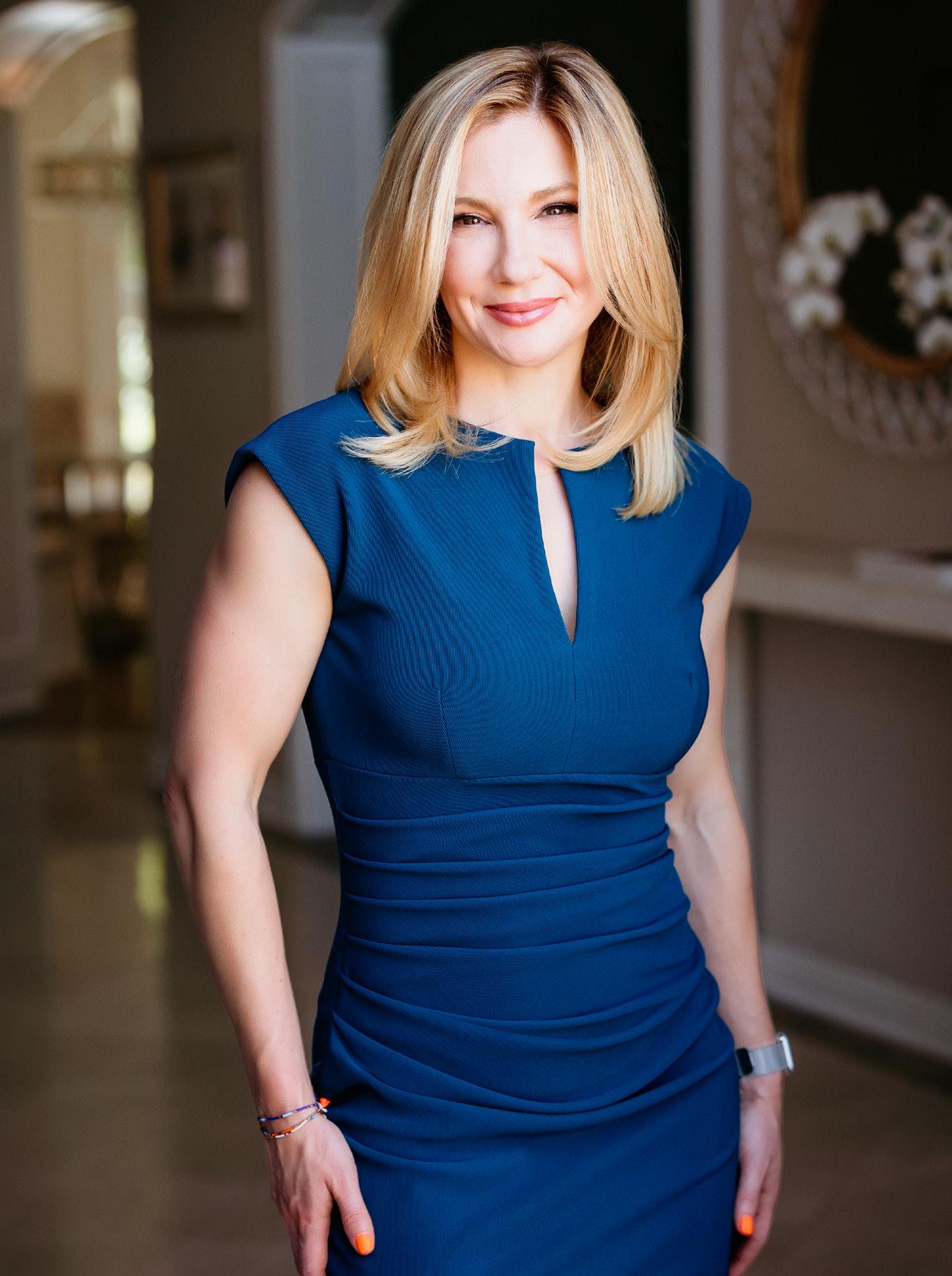
Customer Experience Futurist, Keynote Speaker, 3X Bestselling Author, & Consultant
Hi Blake. How did you first get into customer experience, and what inspires you to stay?
When I was 21, I moved to New York City to intern at a fashion magazine called Blackbook. That internship at a print magazine wasn’t producing a job but luckily, I got recruited to work at a conference production company producing events. I was tasked with producing conferences like “Content Week” and “Web 2.0 Day” and “Social Media Summit” back in 2007 and eventually was given the online portfolio of customer management and completely fell in love with it. Since then, I’ve been blogging and podcasting about the power of customer experience. Along the way I’ve held jobs at Intel and startups, but what I love most is thought leadership via content like books, keynote speeches and podcasts.
You have your third book coming out July 3rd 2024 called The 8 Laws of CustomerFocused Leadership with HarperCollins. What is the theme of this book?
In my research what I learned is that customer experience initiatives have to be driven from the top. If you want to create a customer-centric culture you cannot do that without leadership fully on board, engaged, and driving that culture every day. I interviewed many C-level leaders and shared their stories of customer experience transformations. The book follows a framework of C.X.L.E.A.D.E.R. and each acronym stands for a piece of creating this leadership culture within the organization. Create a customer experience mindset. eXceed Long-Term Profit Expectations by Focusing On Both Short-Term and Long-Term Profits. Lay out your customer experience strategy creation and stick to it.

If you want to create a customercentric culture you cannot do that without leadership fully on board, engaged, and driving that culture every day

Embark on your 90 day get started plan. Anticipate the future by being a customer experience futurist.
Don’t forget that employees are customers too. Evaluate success and measure what can be measured.
Reaffirm the priority - keep CX front and center.
Can you please share the major takeaways from your 2nd bestselling book, "The Customer Of The Future" published by HarperCollins?
The customer of the future is already here. They want zero friction seamless customer experiences. There are five things they care about most, including 1. convenience, 2. quality, 3. price, 4. customer service, 5. trust, and transparency. The book tells stories, research, and data.
You are also the Advisory Board Member at Minerva CQ. Can you please tell us about this organization and your role in it? Minerva CQ is an Artificial Intelligence startup focused on reducing call times in the contact center. AI can now create efficiencies for contact center agents, serving customers faster, more efficiently, and creating a better customer experience in the contact center.
In your experience, how can organizations effectively bridge the gap between customer experience (CX), employee experience (EX), and user experience (UX) to create a holistic approach that benefits all stakeholders? If you want to bridge the gap among CX, EX, and UX, you have to first identify what these things actually are. You can't just sit in your

office and look at spreadsheets. You have to go talk to customers. You have to go talk to employees. And you have to understand what the user experience actually is for both parties. Many companies now view employees as customers. They see a direct line of sight between customer experience and employee experience. If employees are unhappy at work, they're not going to have a smile in their voice. They're not going to bring their whole selves to work and inspire innovation and energy. These are the things necessary to create a customer centric culture. If you want to bridge the gap, the first thing you have to do is decide what you want and what length are you willing to go to understand the reality of the state of these various things.
AI can now create efficiencies for contact center agents, serving customers faster, more efficiently, and creating a better customer experience in the contact center
As a customer experience expert, what key performance indicators (KPIs) or metrics do you recommend organizations should track to gauge the effectiveness of their CX, EX, and UX initiatives?
There are a lot of customer experience metrics, employee experience metrics, and UX metrics but you have to figure out where you are trying to go and what metrics will measure performance to help you get there. What's measured gets improved. You have to make sure that the metrics you set in place won't be gamed by the employees. Too many companies use net promoter score thinking that this will simply fix their problems. But then what you find is that employee’s game the system and the results are not accurate. You can look at customer satisfaction. You can look at repeat purchases. If you're really savvy, you'll be tracking word of mouth and how many new customers you get through current customers by referral.
You can also look at sales. I believe if you are doing a good job, your sales will be going up. You can look at repeat calls to the contact center. Obviously, if you're doing a good job with customer service, your call volume is going to go down. The better you leverage technology; the less customers and employees will struggle to solve problems themselves.
How do you see the role of technology, specifically data analytics and AI, in shaping the future of customer experience? Are there any specific tools or platforms that you believe are essential for organizations to adopt? Obviously, the cloud has been a hugely important improvement for the contact center and customer
experience world. Data analytics and AI can help companies level up their personalization game. They can get more accurate real time insights into what's happening with their customers. They can scale up or scale down. The idea is to serve customers quickly, serve them in a quality way where the customer is getting value and they're getting what they need. All the technology should be making employees and customers lives easier and better. When we think of the customer experience technology stack, increasingly the cloud is more and more important, but also CCaaS is very important. CCaaS stands for contact center as a service, which means using a contact center provider software rather than having your own equipment set up. This can help you scale quickly and offer better experiences.
Throughout your career, you have and continue to don numerous hats; fondly called as The Queen of Customer Experience, a best-selling author of three books, recognized as one of the top 40 global female keynote speakers, host of The Modern Customer Podcast, to name a few. Our readers would love to know the secret sauce behind your successful career. The secret behind my career is simple, I just never give up. When I was a little kid, I played soccer and I wasn't the fastest and I didn't have the best footwork, but I learned to get back up no matter how many times I was knocked down. It taught me to be resilient. It taught me to not back down even when people say critical things, or I fail, or I'm told that a client wasn't happy or a speech didn't go well. I think another thing that's really important is to only internalize feedback from people that are invested in your career.

What are your passions outside of work?
I am a wife and a mom with two amazing kids, ages four and seven. I spend a lot of time with my family, and that is very important to me. Outside of work, I'm very into fitness. I love to run and lift weights. I love to cook healthy food my family. And I really enjoy spending time with friends, swimming in Southern California, walking my dogs, or just relaxing.
Where do you see yourself in the next 5 years?
I'll probably have written my fifth book. My kids will be nine and twelve, so I imagine spending more time with them, doing vacations that are great for big kids. I see myself speaking and traveling with my family and just continuing to do what I do every day, which is put in the work. For those long-term results that I've always chased.
What are your tips for delivering great CX with a limited budget?
If you have a limited budget, that means you can't afford to mess things up with customers because it actually costs so much more when you let things get so bad that they break all the time. If you have a limited budget, then you need to be very clean and efficient about the work that you do and the investments that you make.
If you have a customer-centric culture. And you're putting more effort up front to ensure that customers won't need, that your products and services don't break, that your employees are happy before it gets to the point where you lose them. Just because you have a limited budget doesn't mean you can't
When we think of the customer experience technology stack, increasingly the cloud is more and more important, but also CCaaS is very important
deliver great customer experiences. I believe you have to just have the customer experience mindset and the customer experience mindset is not just a mindset, it's a way of life.
What is the one trend or approach in CX that every organization should be implementing?
I like the trend of a digital playground where you encourage employees to bring ideas
to the table that leverage innovative technology. And you create a sandbox of digital tools where employees can try new things without being embarrassed or scared. Because the world is moving so fast, we need our employees to advocate for us to help move the needle forward, to innovate. And so having a digital sandbox for employees to play in can expedite that innovation.
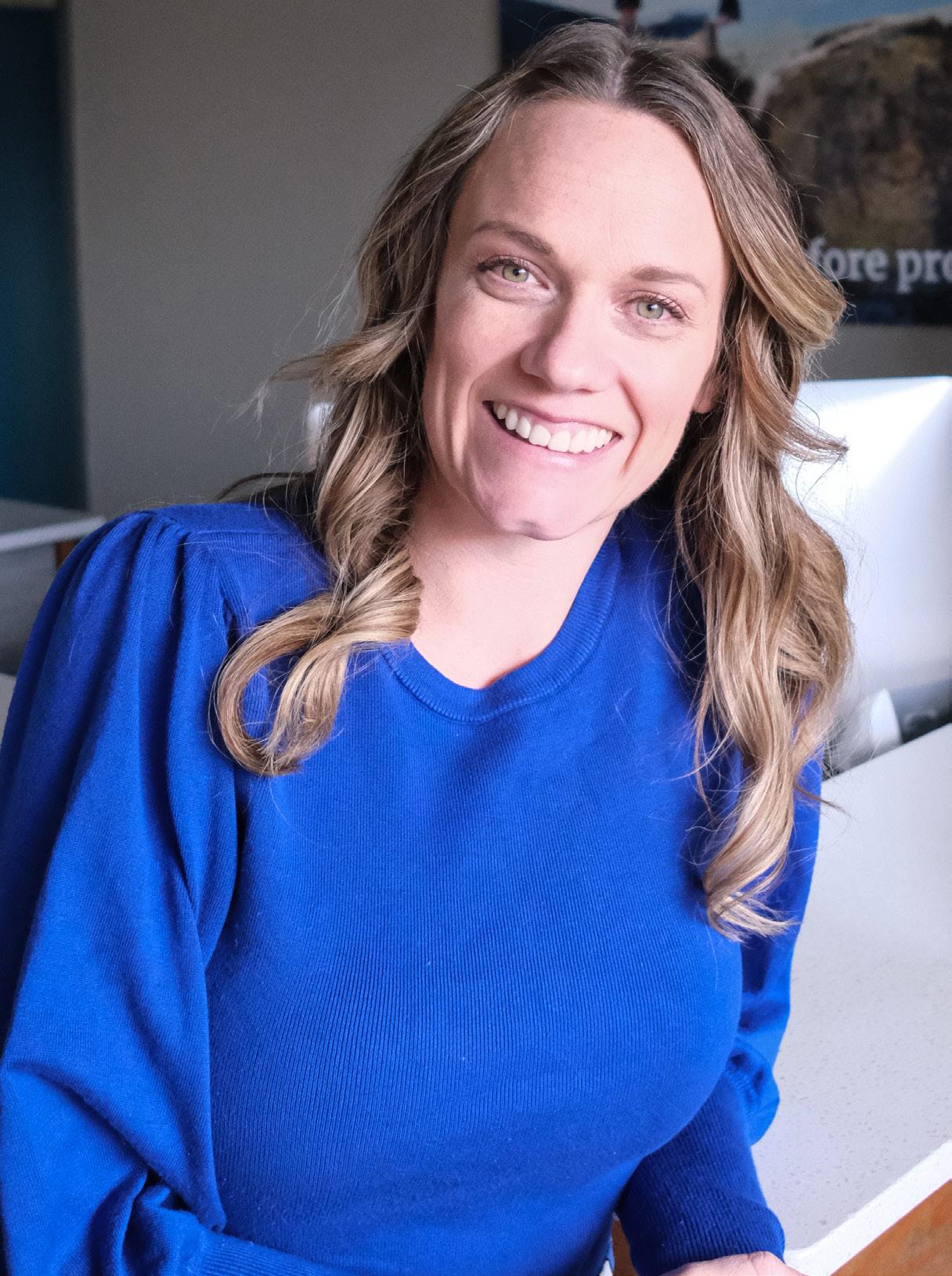
Blair Fjeseth President and CEO of Mountain Health CO-OP
When it comes to professions and occupations in the world of industries, healthcare is as much like a pulse to the bodies that fill this planet. For Blair Fjeseth, the President and CEO of Mountain Health CO-OP, this heartbeat remains closer to the heart. Her journey into healthcare began at just nine years old when her family faced a crisis: the ill health of her father by kidney failure. He was a special education teacher fighting for his life. Blair’s family lost their health plan eligibility because of preexisting conditions and went from comfort to instability and vulnerability. “Sadly, I was not alone in this experience; millions of
Americans faced the same reality, one that is hard to climb out of,” says Blair.
However, Blair never thought that she would take up a career in health insurance. Her career movement was anything but progressive, as she went through several leadership positions in various fields. “What gives me joy and what I am passionate about is building teams and a culture that benefits the greater good,” says Blair. Her entry into the healthcare realm was serendipitous, starting with her involvement in the formation of the National Alliance of State Health CO-OPs (NASHCO) and later collaborating with the founders of the Montana Health CO-OP, now known as Mountain Health CO-OP.

“I was not searching for a specific healthcare role,” Blair recalls. “But when the CO-OP's Chief Executive Officer, Richard Miltenberger, invited me to join, it seemed to be the right thing to do.” She started as a Director of External Affairs at Mountain Health CO-OP, moved into the Chief of Staff role, then COO, and was named CEO after an extensive national search. “I feel privileged to have been given an opportunity to really get to know this business before leading it,” Blair says, with genuine sincerity.
Blair’s story, therefore, affirms life’s unpredictability and its opening of doors that chart the course of human lives. As she steers Mountain Health CO-OP through the complexities of healthcare, her compass remains true: to try and lead a life that genuinely helps people when times are good and bad, listen to them, and act in their best interests. While it may be difficult to achieve such high goals, our commitment is to strive for them even though we may fall short.
Mountain Health CO-OP operates with a clear mission: to offer non-profit memberowned health insurance and be an organization that empowers its members to be involved in the decision making process and have a say in how they receive benefits. Their vision goes further than a mere provision to promote innovational, member-oriented healthcare. This vision hinges on the triple aim: promoting the
well-being of the populace, optimizing patients’ satisfaction with the care they receive, and combating for the costs of care.
“Our scoreboard is not about revenues,” explains Blair. “It’s all about making a meaningful positive impact to people’s lives and at the same time holding the marketplace accountable to help change the healthcare system to create one that works for the people that need it the most.” An example of this is Mountain Health CO-OP’s recent foray to Wyoming. By injecting competition into the market, Mountain Health CO-OP slashed rates by approximately 12%, translating to millions in savings for Wyomingites. “When we look at success in this health industry, it's often in lives covered and dollars made. I'd like to think success looks like "how much good did we do for the communities in this region," Blair reflects.
Embedded in Mountain Health CO-OP’s model is the idea that everyone should have options regarding the healthcare they receive.
Moreover, Mountain Health CO-OP does not only provide wide-ranging coverage options, but also has some unique fundamental benefits, such as free medications, including insulin. By Blair’s assertion, no one should have to give up basic needs in order to get basic needs, that is, medication.
“People shouldn’t have to decide between paying for their prescriptions or paying their rent. We go above the standard benefit model and pay people to get a dental exam, an eye exam, and a home health assessment,” shares Blair. Understanding the shortcomings of specialist appointments in rural fields, Mountain Health CO-OP acts proactively. They cover expenses for many members to travel for necessary complex treatments; meals, plane tickets, hotel - the whole kit and kaboodle.
At Mountain Health CO-OP, the board is not comprised of executives but is composed of
Mountain Health CO-OP operates with a clear mission: to offer non-profit member-owned health insurance and be an organization that empowers its members to be involved in the decision making process and have a say in how they receive benefits
Embedded in Mountain Health CO-OP’s model is the idea that all people should have options regarding the healthcare they receive
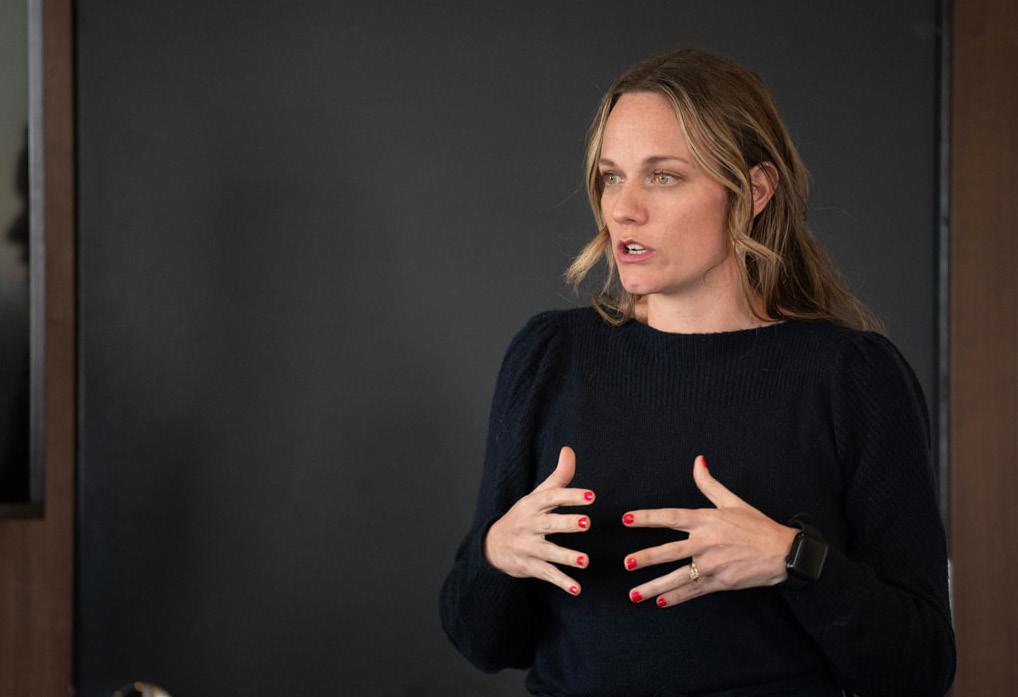
members who pay premiums and utilize benefits. This unique perspective guides decisionmaking so that everyone has a chance to share their story and be valued. “That is why we focus not only on the claim but the person making it,” Blair noted. “Many times, they're the ones left behind and struggle to find needed clinical and financial resources to become well.”
Unlike many companies, Mountain Health CO-OP doesn't ask customer service employees to aim for short call times. Customer teams are encouraged to invest as much time as needed
to support their members. "We understand we are not perfect so when issues arise, we treat them as opportunities to implement systemic changes that benefit the entire membership, rather than addressing them as isolated incidents," Blair emphasizes.
Feedback isn't just welcomed— it is an integral part of Mountain Health CO-OP. Members receive post-surgery calls, assistance with outof-state care, and regular surveys. Utilization is tracked, website behavior is monitored, and focus groups are organized." Our members have

been excellent at sharing what they like and want to see improved," Blair notes.
Despite covering thousands of lives, Mountain Health CO-OP maintains a personal touch. "Our size is our superpower," Blair explains. "It allows us to forge genuine connections with our members." Accessibility is also a key. Blair's personal email is included in communications, ensuring members can reach out directly with their concerns.
Mountain Health CO-OP leads in innovative health care. Technical progress with AI and machine learning helps identify members needing intervention and encouragement to use benefits for preventive care like mammograms and other cancer screenings. Additionally, Mountain Health CO-OP is partnering with Uber Health to address transportation barriers to appointments. "We use technology to bring mental health and doctors into your home 24/7. In rural states where you drive hours to see a doctor, this is a game changer," Blair shares.
Looking ahead, Mountain Health CO-OP will continue its efforts to strengthen members' experiences. "We are working diligently on developing deeper partnerships with providers on medical management," Blair states. "We ponder daily how to encourage people to see the doctor sooner, provide them with the best care, and eliminate barriers for members."
But the work of Mountain Health COOP goes well beyond its own walls. The organization played a pivotal role in helping a nonprofit that provides eye exams and glasses to children across Idaho, Montana, and Wyoming. "Rural states like ours are
often underserved in the health space, so we take our equipment, doctors, and staff on the road to screen kids' eyes and get them in glasses without costing caregivers a dime," Blair explains.
Healthcare nowadays is characterized by never-ending changes in policies, and therefore succeeding in such an environment demands flexibility and creativity. Blair recognizes the delicate balance between compliance and progress. "Regulations are essential for consumer protection, but excessive red tape can stifle innovation," Blair acknowledges. "Our mission is to help our members. We work with regulators to craft legislation that will work for them and not be a roadblock or self-promote regulation that increases complexity and decreases competition."
In addition to dealing with the complexity of the industry, Blair also deals with biases against her gender and the expectations of society. “I was once asked about becoming the CEO, "Can you even do this job with three young kids?" I believe that more C-suite leaders should resemble the people they are serving,” she says. But Blair views her role as an opportunity to challenge norms and foster work-life balance. "Genuine leadership is about embracing life's demands," she adds. "It's about driving minivans and coaching little league—it's what humanizes us. I’d rather look like the people I am working for (our members) than someone out of touch with the reality of everyday people."
One of the main elements of leadership, in the opinion of Blair, is listening. Too
often, the industry dictates rather than listens. But true innovation emerges from dialogue and collaboration. “If leaders simply take time to listen to their members, staff, and partners, they can find common ground, innovation, and emerging trends,” Blair says.
In a rapidly changing, highly regulated environment, learning agility is essential. "More change is happening now than ever before," Blair notes. "Success requires not only a long-
term vision but also the ability to make quick decisions. Every day brings new challenges, and having a team willing and driven to solve them positively for our members is crucial."
At Mountain Health CO-OP, success is assessed through a blend of qualitative and quantitative measures. Blair employs a unique "3Ms" framework to evaluate the organization's

Looking ahead, Mountain Health CO-OP will continue its efforts to strengthen members' experiences
activities. "We consider whether our actions align with our mission, achieve necessary metrics, and effectively serve our members," Blair explains.
This comprehensive approach includes several key indicators: tangible improvements in individuals' lives and the broader community, colleague satisfaction and fulfillment, financial stability without compromising service quality, program and service expansion, high levels of member satisfaction, positive feedback, and the promotion and recognition of innovative ideas throughout the organization.
Every day at the CO-OP offers something rewarding. Blair shares, "We start each meeting with a member success story. The amazing things our team does for those we serve make me excited to come back each day." The resilience and struggles of the members drive her to continually strive for better solutions.
A particularly memorable moment for Blair was during a legislative hearing in Montana. "We listened to Montanans talk about rationing insulin because of the cost," she recalls. "We were the only ones who could say, 'We offer insulin free to all our members.' These added benefits may eat profits/
margins, but for me, being a part of a team knowing we have done right by the people we serve is a great feeling."
The healthcare field holds remarkable growth and transformation over the next 20 years with the leadership of millennials and women. Blair looks into these changes optimistically and with great insight. She says, “Reflecting on the past, we've witnessed significant changes driven by regulation, consolidation, medical breakthroughs, technological advancements, and the impact of a global pandemic.”
Looking forward, the industry will continue to adapt to artificial intelligence, cybersecurity demands and costs, specialty drugs, and continued medical advancements. "Our industry and society will evolve in ways we can only begin to imagine," Blair predicts. With these changes on the horizon, Mountain Health CO-OP remains committed to its members We are ready to embrace new challenges and opportunities. The future is full of possibilities," Blair concludes. "And together we're excited to be part of shaping it."
Chantelle Znideric is an award-winning personal stylist and personal brand expert. She is based in the U.K. and serves as a style consultant, for top-performing leaders, entrepreneurs, and CEOs globally with hugely demanding lives. She has worked with renowned fashion brands, corporate organisations, and high-profile individuals including royalty, politicians, film/ music stars, and celebrities. Chantelle is passionate about empowering her clients to transform their style and channel their true authenticity for dynamic professional and personal growth. Working with Chantelle will provide you with valuable tools to enhance professionalism, excel in your career journey, and achieve guaranteed life-changing confidence.

Recall the last occasion you found yourself in a crowded setting or jam-packed gathering, where one individual effortlessly captivated everyone's attention. Reflect for a moment on what made this person stand out. Chances are, it wasn't just their appearance, but rather the aura of confidence they radiated, knowing they looked and felt their very best.
This is the epitome of a powerful personal brand, and a glimpse into what I’ve been helping ambitious, leaders and professionals achieve for almost 20 years.
In today's diversely energetic business world, every interaction counts, and when you are performing at your peak, opportunities become plentiful.
In my experience, and having worked with hundreds of professionals, personal branding stands out as the ultimate catalyst for ambitious leaders eager to amplify their presence for dynamic professional growth.
An interesting thing happened after the pandemic, many of us headed back to work with a different and perhaps less formal dress code. With our virtual offices set up at home,

Interestingly, what’s changed is that rather than a focus on ‘high fashion’, we’re in the age of appreciating that less is more, with introducing quality over quantity, and embracing our own unique personal style
the fact that most people couldn’t see you from the waist down meant many of us got lazy when it came to maintaining our personal brand, and understandably so.
What I am now starting to see, however, is those working in fast-growth businesses are a) appreciating the opportunity with personal branding, b) increasing their visibility, and c) discovering their own balance between inperson and online meetings. Both are important of course, however, the emphasis that leaders place on their personal branding for both formats has never been so high.
Interestingly, what’s changed is that rather than a focus on ‘high fashion’, we’re in the age of appreciating that less is more, with introducing quality over quantity, and embracing our own unique personal style. This is what it suggests, embracing your uniqueness to wear what you feel most comfortable in that reflects your personality, whether that be a three-piece suit, jumpsuit, or jeans and a tee, and no doubt you have seen people wearing all three at different meetings!
Having a cleverly curated business capsule wardrobe is not just about conserving energy and overwhelm, but ensuring you feel your best ALL the time. It’s also about having a go-to wardrobe, with every single item which showcases your true authenticity, which is the essence of developing your personal brand.
Working with my clients is a strategic and creative process, which has instantaneous, often transformative results. For me, it’s a privilege to be able to help ambitious leaders appreciate their qualities, get to know themselves better, and learn to love their uniqueness. We then celebrate these by curating a wardrobe that feels truly authentic and reflects who they really are.
There is something very powerful about being you, feeling comfortable in your skin, and celebrating that individuality, from the inside out.
When your personal brand displays professionalism, expertise, and authenticity, without even knowing it you ultimately become
a magnet for career advancement, prestigious projects, and high-profile leadership roles.
In fact, I read in a recent article, Forbes states that 84% of consumers believe that a company's reputation is influenced by the personal brand of its employees. Whilst, according to LinkedIn, 71% of professionals believe that a strong personal brand leads to increased career opportunities. Furthermore, a survey by PwC reports, 77% of consumers are more likely to purchase from a company if its founder has a robust social media presence.
So, at the heart of your personal branding should be a compelling story—a timeless tool that captivates your audience and peers. Your personal brand story isn't just a narrative; it's a scenic journey—a testament to your resilience, and passion for why you do what you do. Embracing this process, allows you to connect with your audience on an instinctive level.
So, where do you start with creating your own successful personal brand?
Start by understanding your uniqueness. This plays a fundamental role in developing your personal brand, as they will ultimately form the foundation upon which your brand identity is built. Be true to yourself, and you will inspire genuine authenticity, which builds trust and credibility with your audience. Create an honest list of values and enlist the help of others if you find this challenging.
Embracing your style personality and understanding your individual preferences can be incredibly liberating. Look to your

There is something very powerful about being you, feeling comfortable in your skin, and celebrating that individuality, from the inside out
existing wardrobe for clues on colors that make you feel joyful, styles you enjoy wearing, and details that reflect your personality.
Step 2 – understand the culture you work within What is it that makes your company different? Consider culture, values, ethos, expectations, and diverse settings.
An understanding and appreciation of these will help to determine the formality of your attire for different scenarios. It is always advisable to dress smarter than you think you need to be, as there’s nothing worse than looking underdressed and feeling anything less than a top-performing leader walking into that room.
It is also important to appreciate in today's digital age, the possibilities for personal branding are virtually limitless. With the click of a button, you can amplify your voice, expand your reach, and leave a lasting impression on audiences around the globe with your online presence. Your social platforms such as LinkedIn, X (formerly known as Twitter), and Instagram aren't just tools— they are gateways to a world of connections and opportunity, where your personal brand can showcase the real you more than ever before.
Step 3 – curating your capsule wardrobe for authentic leadership –let’s shop!
Your wardrobe should display versatility, higher quality luxury fabrics, and timeless and elegant pieces, with unique details which showcase elements of your personality. Introducing a seamless color palette will enhance your style, add radiance and portray confidence, whilst exuding that desired effortless look.
Your wardrobe should display versatility, higher quality luxury fabrics, and timeless and elegant pieces, with unique details which showcase elements of your personality
Finally, pay attention to the small details such as accessories, including glasses (frames can get overlooked), and introduce a failsafe grooming routine, as these can make a big difference when it comes to executing your desired exterior. Walking into any room, in person or virtually, with that superpower of inner confidence brimming inside, creates the best feeling in the world.
With the increase of virtual networking and meetings taking place online, revisiting your branding photography is well worth the investment to maintain trust, compatibility, and attractiveness to your audiences. There’s nothing worse than meeting a connection who doesn’t look anything like their profile or bio picture. Call me old-fashioned but to me, it suggests a lack of care and attention, which
may have a negative impact on how not to portray a personal brand.
So, to summarise the power of personal branding, maintain and keep your style innovative, fresh, and exciting. It is not just a concept—it's a reality waiting to be discovered and then rediscovered at least twice yearly. For myself, I like to refresh aspects of my brand seasonally. Think of the most successful pop stars on the planet – apart from endless talent, they continue to reinvent themselves and move with the times conveying new styles, trends, and sounds. No doubt this has a positive impact on their performances and ability to maintain interest in them whilst attracting new audiences. This is why they continue to remain current and edgy, and it leaves us wanting more. Dare I say it, find your inner star in your own area of business and see instant results.







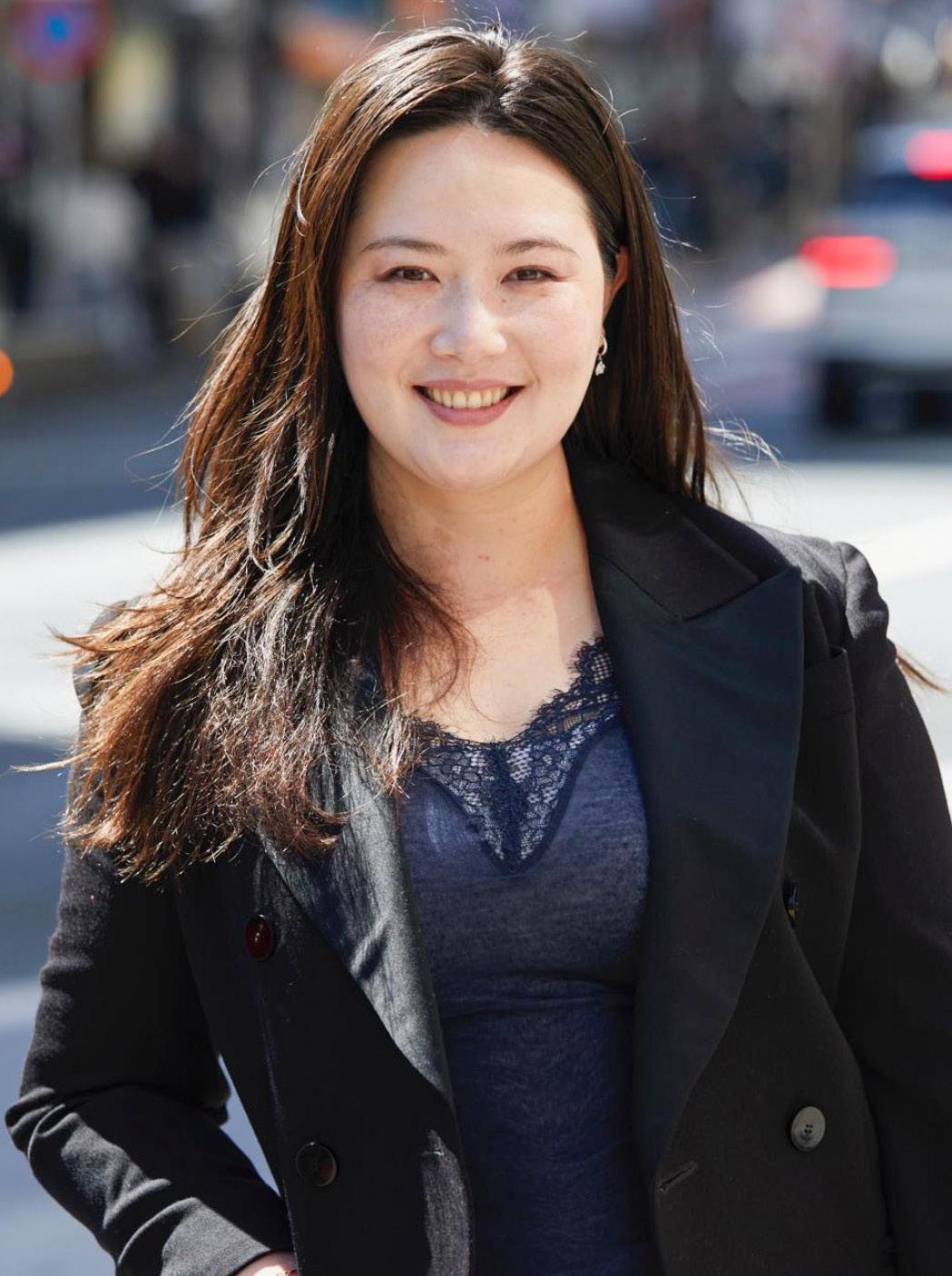
Sabine Wisnioski, a Global People Change Leader, has a diverse background that reflects her global perspective and deep understanding of people dynamics. Born in Hong Kong to a Hong Kong Chinese mother and a Polish American father, Sabine's upbringing was influenced by various cultures. Growing up in Singapore, during her undergraduate years at the University of Washington, Seattle, Sabine embarked on transformative study abroad experiences in Italy, Paris, and Kyoto, which exposed her to diverse cultures and ways of thinking. These experiences taught her valuable lessons about people dynamics and the importance of understanding others' motivations. After
completing her undergraduate studies in the US, Sabine returned to Singapore, where she worked at Google's APAC Singapore and pursued a Master of Science in Knowledge Management at Nanyang Technological University. Her passion for living in different countries and connecting with people from various backgrounds drew her to HR roles that spanned international markets. Her inquisitiveness of how a strong organization correlates to building efficient and effective businesses was what piqued her interest in the field of HR. In 2016, Sabine made the bold decision to relocate to Tokyo from Singapore without knowing anyone in Japan. This move ignited her career in the tech and fintech
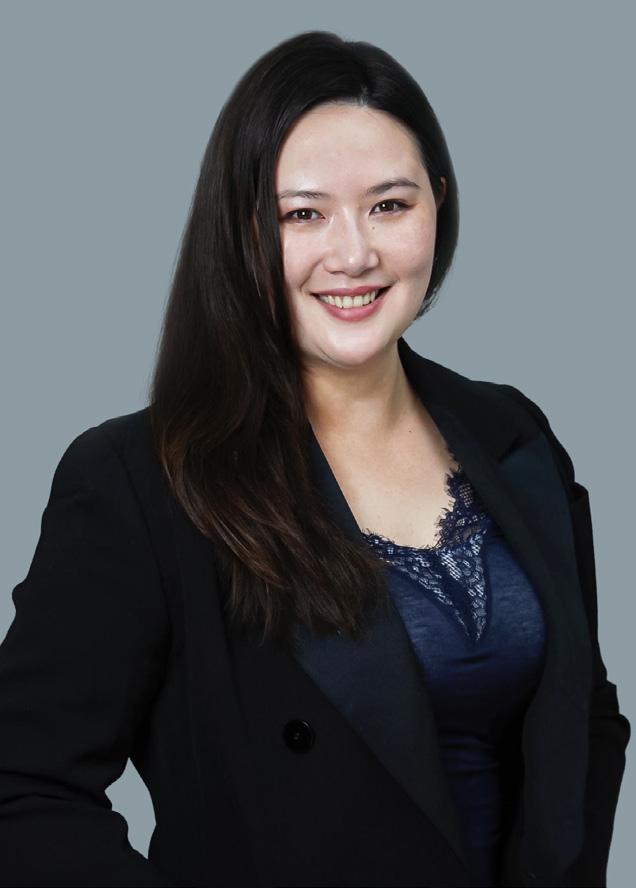
startup space leading and managing HR teams. Joining Fusion Systems as the Head of HR, Sabine embraced the challenge of building and scaling the organization globally across 4 countries. "This role really helped me gain confidence in trusting my instincts to lead an organization," Sabine recalls, emphasizing her role in scaling her first company in Japan by sourcing and hiring engineer and non-tech hires by tripling its headcount globally from 50 to 150 employees.
Sabine's journey in HR leadership is a testament to her resilience, adaptability, and unwavering commitment to driving change. Sabine utilized her APAC experience in HR operations at large MNCs and implemented her knowledge and skills into leading the People agenda for the Japanese and US start ups she worked for with a tailored approach for each for business's expected outcomes. During her role at AlphaPoint,
"In
my experience, culture is about more than just buzzwords or trendy slogans," Sabine asserts, highlighting the importance of delivering on the "holy trinity" of organizational culture. These intangible aspects, she notes, are often overlooked in favor of more quantifiable metrics, yet they are crucial for long-term success
"As an HR professional, I relish the opportunity to delve into various aspects across the organization. The exposure to many business teams is fascinating," Sabine remarks
a NYC-based white-label payments and cryptocurrency company Sabine faced the challenges of working overnight hours while living in Tokyo to align with EST time zones. She was overseeing global HR operations with operations spanning multiple continents US, APAC, EU and LATAM. The US, EU and LATAM which were new markets for her to take on and lead the People Operations. She had to staff a team quickly to relocate to El Salvador to help build the national digital wallet to support 4 million of residents of the country of El Salvador. "The graveyard shift mostly didn’t bother me that much, or so I thought back then," Sabine reflects. However, the toll on her health and well-being prompted her to seek new opportunities in Japan with more traditional work hours so that she could have a normal life again and put a halt on relocating to NYC for her future role instead. For my first company in Tokyo, Fusion
Systems, I had to staff a brand new tech and customer service team out of Barcelona from Japan for our new sister entity under our Japan HQ all on my own, but at least I was in a closer time zone between APAC and the EU vs APAC and EDT.
It was during this search that Sabine's path intersected with Wayfarer, a company initially outside her realm of interest in the hospitality industry. However, upon closer examination, Sabine recognized the potential for opportunity in areas such as change management; which the company needed at the time and saw this as another challenge to make a lasting impact for improvement. Joining Wayfarer in 2023, Sabine took on dual roles as Chief People Officer and Chief of Staff, leveraging her extensive HR expertise and experience across diverse industries and global markets. Under her leadership, Wayfarer experienced rapid growth, expanding from 25 employees to over
100 within 8 months and increasing its hotel portfolio from 3 to 10 hotels within six months. In her most recent role, she helped scale the company while implementing crucial people processes that were lacking in infrastructure using systems and workflows to facilitate driving change management initiatives from engagement activities to employment surveys.
Sabine's leadership style is characterized by her innate ability to communicate effectively and foster empathy through active listening, analyzing data collected from deep dive questionnaires to consider pain points that lead to driving change in engagement and innovation. She recognizes the importance of building personal connections in remote work environments, prioritizing the well-being of employees while pushing the boundaries of creativity and analytical thinking to achieve organizational objectives.
Reflecting on her journey, Sabine emphasizes the importance of strong leadership anchored in confidence, boldness, communication, empathy, and strategic thinking. As she continues to navigate the ever-evolving landscape of HR leadership, Sabine remains committed to driving positive change and fostering a culture of growth, belonging, and innovation within organizations.
Sabine believes that organizational culture encompasses various elements tailored to each organization's unique context. However, at its core, she emphasizes three fundamental aspects: providing a sense of belonging, fostering personal and professional growth, and creating an environment where employees are genuinely motivated come to work every day. “HR has to find ways to make the organization an exciting place to work otherwise people could be off doing something else with their time, or working somewhere else.”
Sabine has witnessed firsthand the pitfalls of organizations that prioritize superficial measures over genuine investment in their people. She recalls instances where companies adopted trendy slogans or followed random fads from the internet but had no experience or clue how to execute the idea into their business strategy just to look cool as a brand while neglecting the core of their people strategy - the personal and professional development of their employees, winning them over with data and transparency which ultimately helps retain the ones who value the effort invested the organization. "Management teams wonder why they face challenges like high
“It's about leveraging the resources and opportunities at hand to drive meaningful impact and getting things done by influencing and motivating others,” Sabine shares

turnover rates or labor disputes," Sabine observes, "but fail to realize that prioritizing their people's interests and addressing their concerns according to the business roadmap is essential for a strong org. culture and steady growth."
In Sabine's view, investing in employees' development is not only a moral imperative but also a strategic advantage. By fostering a culture that prioritizes growth, learning, transparency, and
support, organizations can cultivate loyalty, and knowledge sharing, and ultimately, achieve higher returns, both tangible and intangible through the retention of knowledge and personnel.
Sabine finds the dynamic scope of HR both exhilarating and challenging, as it trains her to be attune to her instincts and intellect simultaneously.
“I won’t say I have it all figured out myself quite yet all the time as each job that I go to I learn another dimension of how complex people can be. For better or for worse. This is why leadership is so important. Having good leadership is hard to find and carry out as that can make or break a company and everyone’s experience. Founders forget that this IS part of the brand equity equation and not just your customers’ experience,” says Sabine
HR encompasses a wide array of generalist responsibilities crucial for organizational success. From managing day-to-day operations to driving strategic initiatives, HR plays a pivotal role in keeping businesses competitive and thriving.
Sabine's passion for HR extends to data analysis and process improvement. She derives satisfaction from studying the data collected from HR systems, building efficient systems and processes from the ground up, and witnessing their impact on organizational efficiency. "I enjoy connecting with others and introducing new projects and initiatives," Sabine notes. She thrives on communication, ensuring that new initiatives are effectively communicated across the organization to garner support and participation.
Delving into surveys and conducting "deepdives" to analyze potential issues and identify areas for improvement is another aspect of HR that Sabine finds fulfilling. She sees it as an opportunity to uncover insights and drive positive change within the organization.
Sabine is particularly intrigued by the potential of People Analytics projects, viewing them as a powerful tool for storytelling with data. She believes that harnessing the insights derived from People Analytics can provide invaluable support to management teams in making informed decisions. "In the broader context, HR is a multifaceted field that means different things to different people," Sabine reflects.
Sabine is passionate about fostering connections within the workplace, believing that strong relationships are the foundation of a vibrant organizational culture. As a natural connector, Sabine often takes on the role of the "central node," facilitating relationships and creating opportunities for employees to come together.
One of Sabine's initiatives to promote connectivity is the culture and engagement program, which she champions with enthusiasm. With a diverse workforce, Sabine sees these events as an opportunity to celebrate the organization's international and multicultural identity by cross-pollinating departments and teams and across ranks. By encouraging employees to share their national dishes and inviting friends and family to participate, Sabine creates an inclusive environment where personal and professional relationships can flourish.
"These events are powerful in strengthening our bonds with coworkers. ," Sabine reflects.
Another example was when Sabine worked at AlphaPoint, a NYC based company that had an international remote workforce across APAC, EU, LATAM and the US. Since the entire remote organization met in El Salvador where we were supporting a major client --- the El Salvadorian government --- to roll out their national digital wallet, I organized a spa day for all female employees to meet at a fancy spa and we discussed issues within the company and other macroeconomic issues which we could potentially implement into the company going forward. As a remote workforce, everyone was
working from different parts of the world and across time zones. Since it was a crypto company and we only had a handful of women, a few enthusiastic male employees joined us for a sunsoaked evening by the pool for massages, drinks and joined the discussions.
To support these initiatives, Sabine allocates a small budget for hosting events and encourages participation through gamification. She envisions expanding these efforts into the organization's learning and development program, promoting peer learning and empowering employees to drive innovative projects. "We want to encourage and support creativity among our employees," Sabine emphasizes.
Sabine believes that "HR brings invaluable insights to the table by delving beyond the numbers and Excel sheets, uncovering the underlying issues that impact organizational performance and competitiveness.
Leveraging data collected from various sources, including performance evaluations, exit interviews, and training records, HR professionals can diagnose root causes and advocate for necessary changes within the
“I like to help people build connections," Sabine explains
organization. "As HR professionals, we serve as information brokers, uniquely positioned to understand the pulse of the organization more than any other department can," Sabine asserts.
Through effective communication and relationship-building, HR professionals can gain a comprehensive understanding of employee perspectives and advocate for initiatives that address their needs and concerns. This, Sabine believes, is key to building trust and credibility within the organization. "Don’t underestimate the 'sorcery' of HR," Sabine quips, acknowledging the nuanced blend of 1. possessing boldness and courage, 2. emotional intelligence and 3. analytical prowess required to navigate the complexities of human dynamics and its results within the workplace.
While acknowledging the potential of AI in streamlining HR processes and enhancing efficiency, Sabine emphasizes the importance of leveraging technology to augment, rather than
replace, human capabilities. She envisions AI as a tool to support HR professionals in predicting workforce trends, analyzing employee sentiment, and crafting data-driven strategies to retain top talent and drive organizational growth. "I believe HR professionals should have exposure to the commercial side of business," Sabine suggests. By understanding the intricacies of both human dynamics and business operations, HR professionals can identify opportunities for improvement and drive impactful change within the organization.
Sabine's career is defined by her passion for exploring new horizons and making a meaningful impact. I still have ex-employees who reach out to me with questions or just to remain friends. It is so rewarding when you know you have touched someone’s life and brought them some peace or happiness by choosing to show your sincerity and authenticity. We have to remind managers to let
“We
see beyond what those metric numbers mean on a report because we have additional context and relationships to back our hypothesis for reasons as to why these numbers are showing. It is the magic that HR is blessed with. I really like the conversations I have with CEOs when they turn to me to ask why I think this is happening. I usually have a different answer which they did not anticipate,” shares Sabine
"I want to give women their hope and confidence back by providing opportunities for selfdevelopment," Sabine concludes, highlighting her commitment to creating positive change within her community and beyond
employees show up as their entire selves at work, which brings back the topic of belonging and culture. While she enjoys working across diverse global markets, Sabine is also eager to embark on new educational endeavors to further enhance her skills and knowledge. "I am ready to go back to school to learn something new," Sabine shares. Considering in employment law and the emerging field of blockchain, crypto, and digital assets law, Sabine sees further education as an opportunity to broaden her perspective and experiences and explore new career pathways internationally.
Despite her enthusiasm for learning, Sabine remains selective about her career opportunities, emphasizing the importance of aligning with organizations that prioritize the development of the individual. "For me, it's crucial to find leaders who embody good human values and prioritize the People
agenda," Sabine explains. "Without the right leadership in place, it's not worth pursuing."
In addition to her professional pursuits, Sabine is passionate about promoting social impact initiatives, particularly empowering single women and single mothers in Japan who hover at the poverty line without much government support. With a vision to provide them with opportunities for personal and professional growth, Sabine envisions creating her company in the skincare business someday to provide women with opportunities to develop into management roles while supporting their families. This means upskilling and training single moms in poverty into more emerging fields tailored to their interests and capabilities, while allowing them time and the freedom to take care of their families, ultimately empowering them to pursue fulfilling careers.
Claire Koryczan, the Founder and Director of Imagine Beyond, has extensive expertise in creative consultancies, technology, innovation, and HR and brings this into transformative experiences for leaders across the globe. With over two and a half decades of experience, Claire's unique approach to leadership and management development underpinned by coaching is rooted in her diverse background, which brings insights that catalyse profound, lasting change. Claire's contributions have resulted in accolades, including nominations as Entrepreneur of the Year in SohoWorks' Future50, Top Team Leadership Voice by LinkedIn, recognition as one of The Dots Top 100 Rising Stars, a place among Grant Thornton's Faces of a Vibrant Economy, and nomination as a The Dots Female Trailblazer. Claire Koryczan continues to inspire and empower, leading by example and fostering a culture of limitless potential and creative leadership.

Claire Koryczan Founder & Director of Imagine Beyond
We’ve all met one: a boss, a leader, or a colleague who made us feel motivated, energised, and ready to take on anything. It is likely many of us will have fond memories of thriving under their leadership or working alongside them in collaboration. This type of person walks into a room, turns a seemingly insurmountable situation into an exciting challenge, and takes you with them on that journey. What makes these individuals special? And where does this inspiring energy come from? At Imagine Beyond, this is what we call entrepreneurial leadership. And embracing this leadership style alongside staying openminded to utilising developments in AI will help future-proof your business.
Over the course of my career spanning 25 years in people-focused environments, and having spent five building my own business, I’ve taken a lot of time to explore what goes into the making of an entrepreneurial leader. This managerial style and leadership trait is something that we can all tap into in one respect or another – everyone has some of the qualities needed to become a great entrepreneurial leader. You also don’t have to be a business founder or CEO to embody these values; they are very much nestled in your approach to problem-solving and harnessing an innovative mindset. It is, therefore about leaning into where your strengths are, leading with authenticity, and shifting your mindset to view challenges as possible opportunities that help you to gather insight or learn something new that will add value.
Entrepreneurial leadership extends beyond driving revenue, having great ambition, and pioneering ideas; it is about broadening your focus beyond the day-to-day business side of things. These leaders find new ways to add value to both their organisation and their people and have the ability to take a problem and turn it into a chance for positive change. This would be demonstrated, for example, in introducing AI to optimise your business or adopting new ways of working.
Of course, there are many traits that make up an entrepreneurial leadership style. How an individual generates business value while making an impact that drives employee motivation and engagement upward is key.
At Imagine Beyond, we often reference 12 key characteristics that should be considered. These include agility, creativity, curiosity, and tenacity. Leaders who embrace and embody these galvanise their people in the process and truly lead with purpose. This is now more vital than ever in a consistently evolving AI-driven landscape and equally important within the hybrid working set-up that many of us have become familiar with.
We’ve already seen the impact of technological advancements altering how we work. The integration of AI features to collaborative work management platforms that optimise workload, personalised AI-generated sales content, and over 200 billion AI-powered predictions daily means AI is already immersed within many industries. As artificial intelligence continues to accelerate exponentially, an entrepreneurial mindset will help businesses to naturally find
ways of capitalising on and discovering new opportunities rather than becoming paralysed by the fear of the unknown. Entrepreneurial leaders are excited by change and thrive in uncertainty because they find drive in optimism and know they can always figure things out.
In the next decade, it is expected that AI training may grow by upwards of 100 million times faster than Moore’s Law. With the vast rate of innovation we are seeing in AI, even the next five years will look very different. The introduction of leadership and AI coaches is transforming the way businesses seek advice and guidance. AI is truly revolutionising the modern-day workplace and we are just at the very beginning of this journey with chat gpt5 already due out at the end of this year.
These developments, when embraced, drive efficiencies that we have never seen before and enable teams and businesses to prosper.
The rapid pace of automation in daily tasks paired with less face-to-face workplace interaction is leaving leaders and their team members feeling more separated than ever before. Leaders have a real opportunity to bring people together and create more connections in the workplace. This can be done by creating environments that are less transactional. It is about strengthening human bonds through interactions and opportunities to get together in person for collaborative learning experiences.
AI is evolving at a pace none of us could have preempted, but it cannot and will not replace human imagination – a superpower we
The integration of AI features to collaborative work management platforms that optimise workload, personalised AI-generated sales content, and over 200 billion AI-powered predictions daily means AI is already immersed within many industries
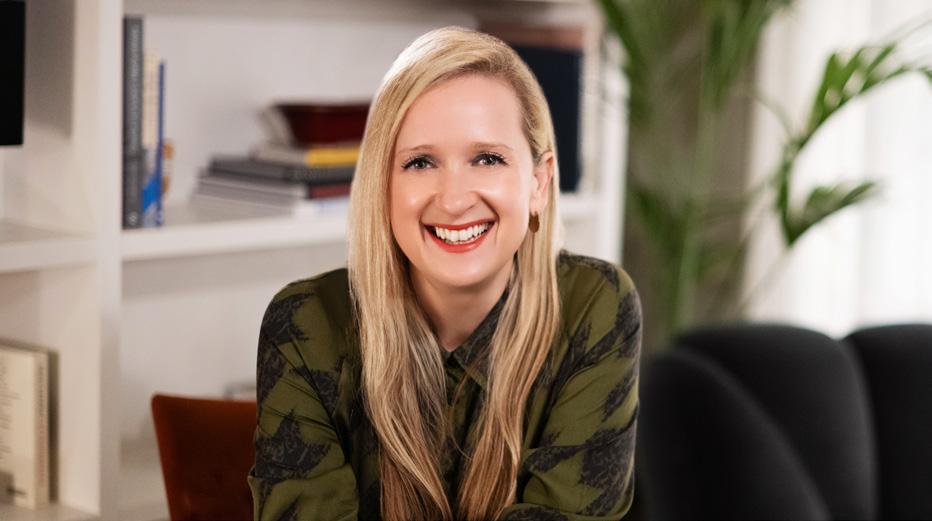
can all harness, especially entrepreneurial leaders.
Motivated by variety, this leadership mindset sees individuals curious about a wide range of topics and industries, and this breadth means that they can connect the dots, find new insights, and seek opportunities that others might not.
Entrepreneurial leaders have a higher propensity to risk than the average leader, and because of their openness and depth of perspective, they gather information that helps them to make leaps into new ideas and opportunities. By embracing technological advancements, entrepreneurial leaders can harness the power of AI to add value to their businesses. The benefits of the adoption of such technologies can take varying forms. An example of this could include using AI to optimise energy use in operations and reduce waste, leading to better sustainable practices that reduce the environmental footprint to help businesses meet their targets. Another example could be implementing AI to help provide a more tailored client and customer experience. Some systems can easily identify consumer behaviour and map preferences, allowing for a more customised and targeted approach.
Integrating AI into business analytics could also help organisations distil data faster and, therefore, map actions as a result with more pace – the opportunities are truly endless.
This famous quote from Charles Darwin has never been so true as it is relevant now: “It is not the strongest of the species that survives, not the most intelligent that survives. It is the one that is the most adaptable to change.”
By nature, these leaders are able to adapt, adjust, and stay relevant. This, in turn, enables them to move with unplanned and unexpected changes in the environment at an economic, social, and environmental level. This particular style of driving teams forward will undoubtedly, in my view, help to future-proof and sustain businesses in an ever-changing and technologically evolving society.
There has never been a better time to tap into our most creative, innovative, and openminded leadership traits as our professional and personal worlds become integrated with technology. Efficiencies will be made, and synergies will be uncovered, but one thing that AI cannot deliver yet is the use of imagination in a human capacity.
Want to Sell or find Investor for your Business?

Vasa Krishnan Chief Technology Officer of FinResults, Inc.
Vasa Krishnan, the Chief Technology Officer of FinResults, Inc., is a leader known for his expertise in technology, data analytics, and artificial intelligence. His journey in the tech world began with a Master's degree in computer science and management.
Starting out as a systems engineer in Research & Development, Vasa worked on tuning operating systems and optimizing large-scale solutions. This early experience paved the way for senior architecture roles at leading financial institutions, where he built advanced enterprise solutions. Vasa says, "While architecting these solutions, I recognized significant opportunities
to disrupt the legacy business models through innovative solutions."
This recognition of opportunity led him to pursue holistic solutions that drive revenue growth, improve customer experience, and enhance operational efficiencies while meeting complex regulatory demands. His success in these ventures propelled him into senior technology leadership roles, where he now advises executive leadership and corporate boards on technology strategies to enable business transformation and innovation.
Leading FinResults has been a particularly exciting chapter in Vasa's career. He teamed up with former colleagues and friends from IBM
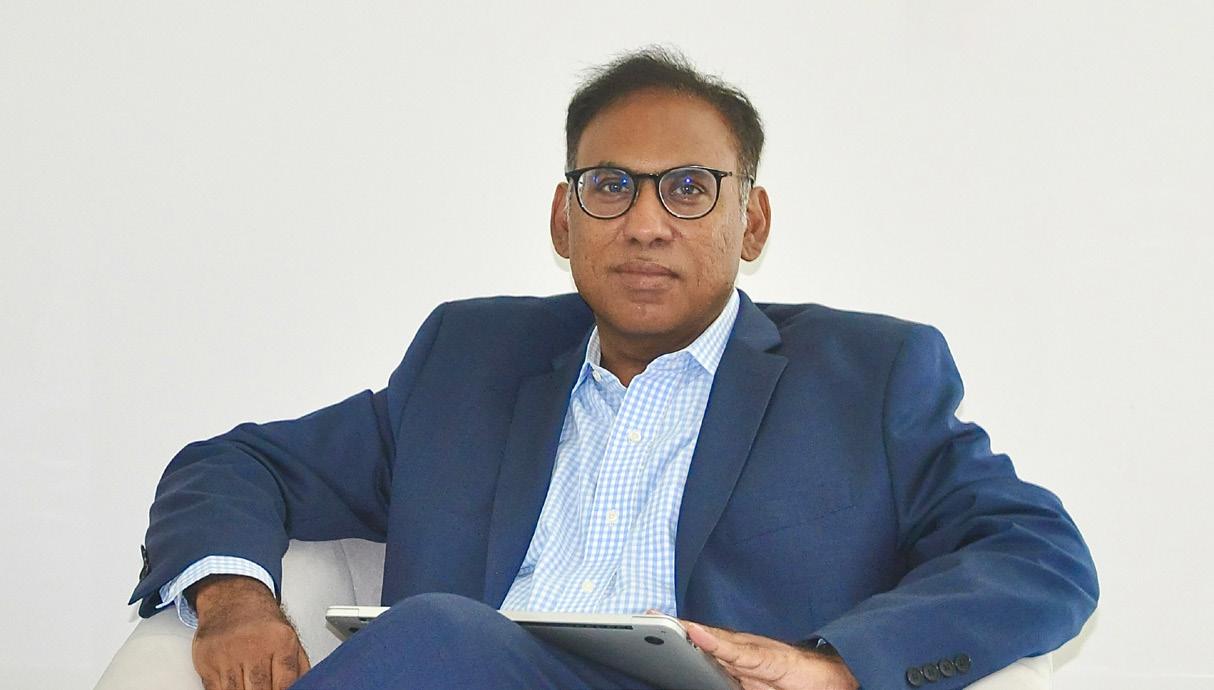
and other financial service organizations to develop cutting-edge, innovative products in the digital onboarding and payments domain.
As the CTO, Vasa is responsible for building products, driving innovation, and shaping the company's technology and product strategy. "It's been an exciting time working with a close-knit group of highly talented team members creating disruptive products," he shares.
Vasa's vision for FinResults is ambitious. He aims for the company's products to become the most used platforms on a global scale. "Continuing to innovate, fostering the best ideas, and building cutting-edge products that drive the best user experience," he states, outlining his goals for the future.
Throughout his career, Vasa has led large technology and data initiatives that revolutionized business practices and enhanced customer experiences. At FinResults, he applied the same principle: start with the user experience and work backward. "I directed our focus on user journeys," Vasa explains. He prioritized creating an environment that fostered collaboration, encouraged innovation, and rewarded great ideas and execution.
Vasa's ability to build and lead diverse teams is one of his core strengths. He has successfully established local, regional, and global teams across multiple institutions, managing groups
ranging from 10 to 200 members with varying skill levels and experience. His knack for identifying, growing, and retaining talent is evident in his approach to leadership. "I love to mentor, coach, and grow careers while building an inclusive, safe, and open work culture," he shares. By promoting collaboration and open communication, he ensures a healthy and productive work environment.
Innovation is a cornerstone of FinResults under Vasa's leadership. He fosters a culture of curiosity throughout the organization, encouraging his team to constantly seek creative ideas that advance and differentiate their product offerings. The team participates in continuous learning programs, using lab environments to evaluate new trends and technologies, ensuring their suitability for product development. "We provide an environment where our team can thrive, continuously learning and adapting to new technologies," Vasa says.
Vasa's vision for FinResults centers on driving business strategy through cutting-edge technology solutions. The company utilizes multi/inter-cloud master/master real-time architectures and a cloud-neutral approach. This innovative framework supports the development of custom intelligent AI models that cover the entire ecosystem, with configuration and metadata-driven, self-healing systems. "Our deployment models and technologies ensure zero downtime," Vasa notes. FinResults employs a stateless API gateway architecture with connected resources, deployed across clusters in multi-cloud environments. They also offer state-of-the-art reporting, analytics, and an AI platform.
Vasa's commitment to bringing advanced, modern platform solutions to smaller players is evident in his work with nFiniti.AI. Unlike large institutions, small and midsize institutions often
Throughout his career, Vasa has led large technology and data initiatives that revolutionized business practices and enhanced customer experiences
FinResults' platform is designed with business processes at its core, featuring a heavy focus on data and analytics, a robust security approach, and a commitment to providing a unique and invaluable customer experience
lack the resources and capabilities to build AIdriven intelligent platforms for digital onboarding that meet regulatory compliance requirements. "nFiniti.AI was created to level the playing field," Vasa explains. The platform allows smaller institutions to digitally onboard businesses, perform required underwriting tasks, deliver complete transparency throughout the process, and provide a seamless digital experience.
One of the key challenges with a startup is the limited time for experimentation. Precise architecture blueprints and technology decisions must be made from the outset. Vasa emphasizes the importance of agility in this environment: "We need to learn to 'fail fast and recover faster' during the early days since we don’t have the luxury of having a lot of time or resources at our disposal."
The dynamic landscape of regulations and compliance also poses significant challenges. FinResults addresses this by involving industry experts for in-depth guidance, engaging external
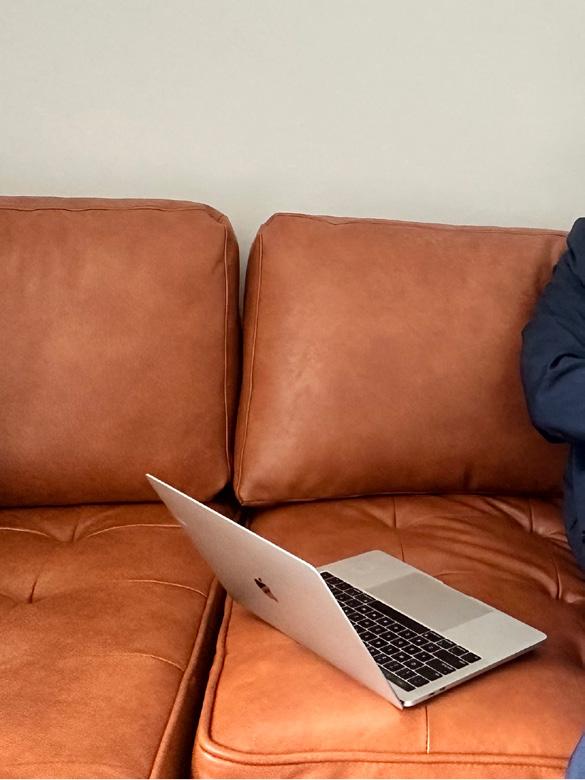
auditors, conducting gap assessments, completing remediation, and acquiring necessary certifications.
Building a robust security framework from the ground up is another crucial aspect of FinResults' strategy. Vasa explains, "We create a clear strategy, implement appropriate technologies, and conduct extensive testing to ensure our information security and protect our overall product ecosystem." This proactive approach helps the company stay ahead of security-related threats and issues.
Another challenge in the industry is the availability of highly skilled resources and likeminded team members. FinResults leveraged
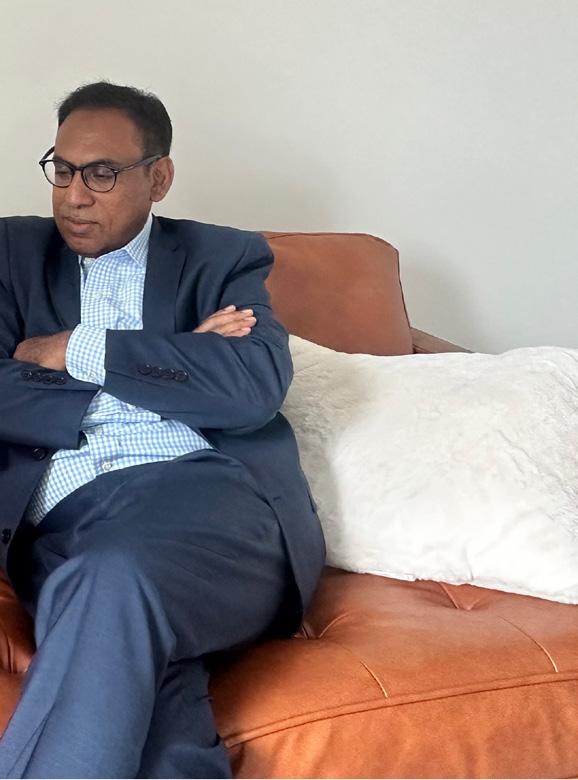
partnerships and professional networks to build an “A-Team” capable of delivering on business commitments.
Throughout his career, Vasa has found that business-driven programs achieve greater success and yield better results. At FinResults, they don't chase new technology for its own sake. Instead, they constantly assess how new technologies fit into their ecosystem to deliver better, faster, and more scalable technical solutions that drive business outcomes. "Having a product created for a business purpose allows us to stay funded, demonstrate value, and incorporate new technologies where applicable," Vasa notes.
FinResults uses continuous evaluation in a lab environment, building small, modular components, and solving integrations at an elemental level before scaling. This approach ensures that the technology adopted is wellsuited to the company's needs and contributes to its success.
Vasa understands that leadership approaches must be tailored to each organization, with organizational culture playing a significant role in how teams operate, technologies are selected and implemented, and innovation is fostered. As a senior executive leader, Vasa has encountered a variety of organizational cultures and personalities. "Each time, I had to understand the nuances, the challenges, evaluate possible solutions, and most importantly connect with the right people to ensure success," he explains. Leadership, according to Vasa, relies on bringing together diverse personalities under changing and often stressful circumstances to work in a unified way

toward success. Key success factors for leaders include transparency, the right level of empowerment to teams, sharing the vision, constant motivation, and decisive action.
Building and maintaining highperforming global tech and ops teams involves many small but crucial aspects. Leveraging his professional network has allowed Vasa to access great talent quickly. Setting a clear vision and sharing it with the leadership and senior team members helped establish trust. "Autonomy and freedom to operate with the right balance of accountability and shared responsibility has resulted in a team that is constantly working to ensure high performance," he notes. Clear and frequent communication with local and global teams ensures that issues are escalated and addressed promptly. Vasa also emphasizes the importance of planning and provisioning for changing technologies, creating lab environments where new technologies can be tested.
In a startup, everyone is handson, meaning everyone has equal ownership and responsibility. Vasa has fostered a trust-based, collective ownership culture where everyone has something at stake. This approach has yielded a high-performing team. Providing constant motivation and ensuring each team member understands the criticality of their contribution creates a growth mindset
and great team chemistry. "This allows for a sustainable team that runs itself," Vasa says.
In the rapidly evolving fintech industry, key trends include increased speed and volume of transactions, heightened security, and competitive costs. Vasa understands these dynamics well. "A well-thoughtout architecture that scales while keeping operating costs low allows FinResults to provide an optimized platform that caters to emerging trends," he explains.
FinResults' platform is designed with business processes at its core, featuring a heavy focus on data and analytics, a robust security approach, and a commitment to providing a unique and invaluable customer experience. This strategic design enables their product offerings to capitalize on market demands, adapting to changing business models and added regulations.
Security is a top priority for FinResults. Their robust security approach ensures a secure environment that can quickly detect and address emerging threats. Vasa emphasizes, "Our platform's security measures are crucial in maintaining trust and reliability in a field where threats are constantly evolving."
The focus on data and analytics is another cornerstone of FinResults' strategy. By providing various stakeholders with powerful analytics tools, the platform helps businesses improve their operations and offer a superior customer experience. "Having a strong analytics foundation also
allows us to prevent losses due to fraud, which is a significant risk in the fintech and payments industry," Vasa notes.
Vasa offers valuable advice to aspiring technology leaders who want to make a significant impact in the fintech industry. His first piece of advice is straightforward: "Know the business. If you want to make an impact, know what you want to impact." Understanding a few new technologies is not enough. Aspiring leaders need to take the time to grasp the nuances, the problem statements, and what they are trying to solve. "Be quick to assess and don’t shy away from new technologies," Vasa advises. He emphasizes the importance of being curious and a constant learner. "Learn something new every day," he says. This continuous learning mindset is crucial for staying ahead in the fast-paced fintech industry.
Vasa also encourages experimentation and not being afraid of failure. "Experiment and don’t be afraid of failing," he shares, adding the important caveat, "Just make sure you can quickly adapt and be willing to change your approach and even strategy if necessary."
By understanding the business, being open to new technologies, constantly learning, and embracing experimentation and adaptability, aspiring technology leaders can position themselves to make a significant impact in the fintech industry. Vasa’s career is a roadmap for those looking to navigate and succeed in this dynamic field.
Dr. Jane Thomason is a globally recognised thought leader on Metaverse and Web3. She is at the forefront of understanding and navigating the evolving landscape of emerging technologies. She is on the editorial board of “The Journal of Metaverse” and was featured by CNN in their series " Decoding the Secrets of the Metaverse”. She is also AIBC Eurasia's “Web 3 Leader of the Year 2023.” As an Industry Associate at University College London's Centre for Blockchain, she actively contributes to the academic and research community.
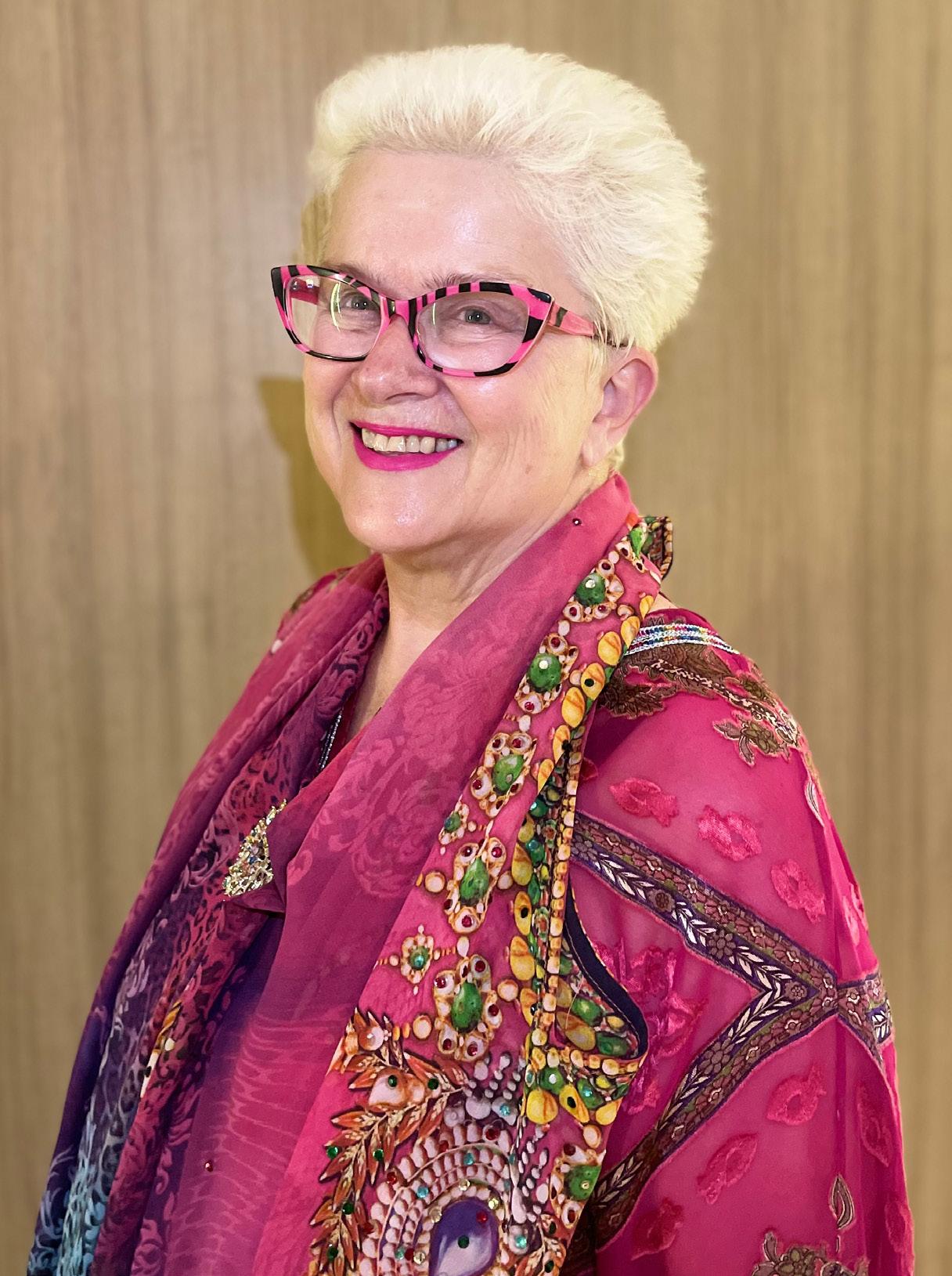
Jane Thomason
Investor in the areas of Web3, Metaverse, HealthTech, and Tech
The increasing impact of climate change on our planet is a significant issue for society.
Environmental, Social, and Governance (ESG) criteria are used to measure investments' performance in terms of their impact on the environment and climate change. Technology will be crucial in achieving the SDGs by 2030, with 70 per cent of the 169 targets defining the world's sustainability goals able to be positively influenced through digital technologies.
Technology and Artificial Intelligence, in particular, can be used to enable investors to assess the sustainability of investments and prioritise investments likely to affect the environment positively. Thus, investors can improve their targeting and increase the impact of their investments.
The market demands a move towards sustainable investing, and funds dedicated to sustainable and responsible investing are growing. This is prompting companies to improve their ESG practices to attract capital. Regulatory pressure is also increasing, with governments worldwide developing and implementing regulations on AI ethics, data privacy, and responsible AI deployment. Compliance with these regulations is becoming necessary, driving companies to adapt their strategies accordingly. Importantly, consumers are more conscious of the ethical implications of AI technologies. They demand products and services that align with their values, pressuring companies to prioritise ethical considerations in AI development and deployment. With these market pressures, companies that excel in ESG performance can gain
a competitive edge by attracting top talent, fostering innovation, and enhancing brand reputation, ultimately leading to increased market share and resilience in the long term. More investors are incorporating ESG into their investment decision-making process, making ESG increasingly crucial for securing debt and equity capital. AI is becoming a critical adjunct to measuring and monitoring sustainability.
Data analytics monitor emissions, air quality, and pollution levels. They include data collection, monitoring, cleaning, integration, analysis, visualisation, and prediction. Machine learning algorithms can help forecast the supply of lowcarbon power technologies, such as wind and solar, which are less harmful to the environment
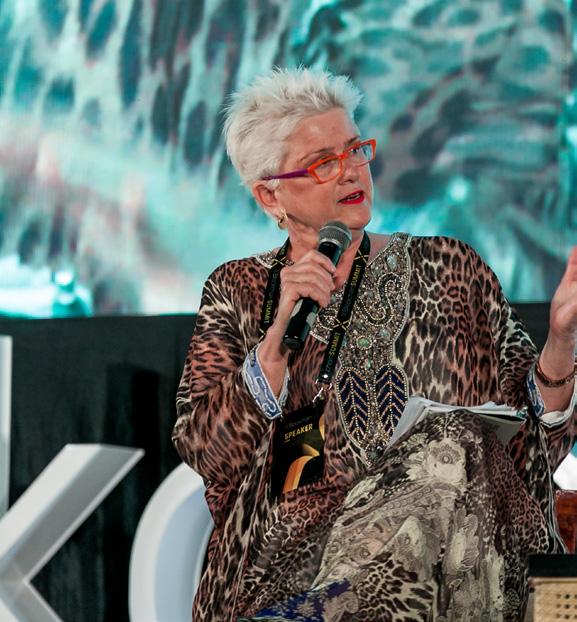

More investors are incorporating ESG into their investment decision-making process, making ESG increasingly crucial for securing debt and equity capital
than high-carbon power technologies that rely upon fossil fuels, which makes it possible to have cheaper and cleaner fuels to power the base load and react to unforeseen events requiring a demand spike. Renewable energy requires a more accurate forecast of renewable power and demand. Some machine learning algorithms are being used to improve the scheduling and forecasting of low-carbon power supply. Predicting supply and demand makes it possible to have cheaper and cleaner fuels to power the base load and react to unforeseen events requiring a demand spike.
AI can be used for forecasting by absorbing historical data, analysing these data, and
producing more accurate forecasts than available forecasting tools. Renewable energy in grids will require vastly more precise estimates for renewable power, such as solar, that comes down to the grid and demand. This has been seen in solar and wind power and optimising forecasts for agricultural yields. AI forecasting can help increase the efficiency and optimisation of climate models. Structured data collected via the Internet of Things (IoT) and secured on a blockchain, combined with AI Measurement Reporting and Verification methodologies, increases the trust and utility of the data to support more efficient and effective decisionmaking and solutions for climate and sustainability.
ESG
investing is becoming increasingly important for investors, and automation and efficiency are two key benefits of using technology in this area
Digital Twin technologies are being deployed for weather and environment monitoring and prediction. This allows examining climate projections and rainfall with hydrological models to see what effect that would have on flooding over the coming decades and enables forecasting of where a flood would occur. Connecting and leveraging different models to evaluate impact on a larger scale is possible, considering more than one variable at a time— for example, AI and data from various sources
(wind, rain, etc.). Digital twins also allow the simulation of the impact of natural disasters on networks through real-time interaction and accurate 3D registration of virtual and real objects using Augmented Reality.
Geospatial data collection of habitat information and accurate measurements of forest borders can support preservation efforts, and Geospatial sensing is used for monitoring emissions and air quality. IoT and sensors are used for remote
monitoring of emissions, air quality, and climate indicators, as well as early warning networks to detect signs of critical climate phenomena or unwanted human presence in protected areas.
ESG investing is becoming increasingly important for investors, and automation and efficiency are two key benefits of using technology in this area. By automating data collection, analysis, and reporting, investors can save time and resources while identifying ESG investment opportunities more efficiently. In addition, technology can enhance objectivity by removing human biases from decision-making, enabling investors to make data-driven, consistent investment choices. Impact measurement is also crucial for sustainable investments, and technology can help by tracking KPIs related to ESG goals, allowing investors to monitor the progress of their investments towards sustainability outcomes and make adjustments. Predictive modelling is another valuable tool, helping companies estimate the future impact of different scenarios by analysing historical data. Natural language processing can help analyse textual data, such as company reports or news, to extract relevant information about environmental practices and identify potential areas for improvement. Image recognition can also be used to analyse satellite images or photos to detect environmental changes, such as deforestation or pollution, monitoring a company's impact on ecosystems. Finally, supply chain analysis can help investors identify areas where a company's operations may have a significant environmental impact, allowing them to make more informed investment decisions. In summary, technology presents multiple opportunities for ESG investing. First, human-
AI collaboration can lead to more robust and informed ESG investment strategies. By combining human analysts' expertise with AI's power, investors can leverage both strengths to make more effective decisions. Second, technology can enhance ESG data analysis by speeding and precision, uncovering patterns, and identifying relevant insights on company ESG performance. Third, technology can help mitigate ESG risks by identifying and assessing ESG risks more effectively. For example, it can uncover dangers in climate change, supply chain practices, and labour standards. Fourth, technology can drive ESG integration by incorporating ESG criteria into predictive models, helping generate sustainable financial returns. Fifth, technology can innovate ESG ratings and benchmarks, creating robust and standardised frameworks to compare and evaluate ESG investment strategies. This fosters transparency, trust, and informed decision-making in ESG investment strategies. Sixth, analysing environmental, social, and governance (ESG) data can predict the long-term financial performance of sustainable investments. It can also identify potential risks and opportunities that may take time to be apparent to human analysts. Seventh, technology can help assess climate risk, identify climate-related risks, and help companies develop strategies to mitigate them. Eighth, technology can help investors identify investment opportunities aligning with sustainable goals, make informed decisions, and allocate capital to companies prioritising environmental and social responsibility. Ninth, technology can track and analyse supply chain data, ensuring transparency and identifying
potential risks related to environmental and social issues.
Technology can analyse financial and nonfinancial data by identifying irregular patterns or suspicious behaviour to detect fraudulent activities. Eleventh, technology can measure companies' and organisations' social impact by analysing data from various sources, such as social media or customer feedback. AI algorithms can provide insights into a company's actions' positive or negative effects on society. Finally, automated green financial planning and investment services can help investors create portfolios based on environmental criteria. These solutions include automated green investment advice, automated green portfolio allocation, or risk assessment based on ecological criteria. In conclusion, technology presents numerous opportunities for ESG investing, ranging from human-AI collaboration to automated green financial planning and investment services.
While technology can be a valuable tool for ESG investing, it has risks. One of the biggest challenges is the quality and availability of ESG data, which can be subjective, inconsistent, and difficult to obtain. Another risk is the potential for bias in AI algorithms, which can perpetuate or amplify social, racial, or gender biases. Interpretability and transparency are also essential concerns since AI models can be complex and challenging to interpret, and there can be a need for more transparency regarding how AI systems arrive at their conclusions. The dynamic
nature of ESG factors presents another risk, making it challenging to keep AI models upto-date with evolving ESG factors.
Additionally, ESG considerations often involve qualitative assessments and subjective judgments that may be difficult to translate into quantitative inputs for AI algorithms. Sustainable investing involves subjective evaluations and value judgments that require human interpretation and contextual understanding. Relying solely on AI may overlook essential nuances and qualitative aspects of ESG analysis. Lack of standardisation is another risk. Developing consistent standards and methodologies is necessary to enhance the reliability and effectiveness of AI-driven ESG analysis. Finally, ethical considerations like privacy, data security, and responsible use of technology are also crucial. Ensuring ethical practices and aligning AI-driven solutions with societal and environmental goals is essential.
As the market demands a move towards sustainable investing, companies need to improve their ESG practices to attract capital. Companies that excel in ESG performance can gain a competitive edge by attracting top talent, fostering innovation, and enhancing brand reputation, ultimately leading to increased market share and resilience in the long term. AI is becoming a critical adjunct to investment decisions. Technological opportunities can help investors make more effective decisions, mitigate risks, and drive sustainable financial returns while prioritising environmental and social responsibility.






